https://tinyurl.com/y66bzxlb
-- Together with an abiding metaphor of a seaedd person in kamaḍha 'penance' and an adoring, bhaṭa kneeling worshipper bhaṭa 'furnace'
![]()
![clip_image056]() m0492Ct
m0492Ct ![clip_image057[4]]() 2835 Pict-99: Person throwing a spear at a bison and placing one foot on the head of the bison; a hooded serpent at left.
2835 Pict-99: Person throwing a spear at a bison and placing one foot on the head of the bison; a hooded serpent at left.
The classifier is the cobra hood hieroglyph/hypertext: फडा phaḍā f (फटा S) The hood of Coluber Nága Rebus: phaḍa फड ‘manufactory, company, guild, public office’, keeper of all accounts, registers.
The classifier is the cobra hood hieroglyph/hypertext: फडा phaḍā f (फटा S) The hood of Coluber Nága Rebus: phaḍa फड ‘manufactory, company, guild, public office’, keeper of all accounts, registers.
Glyph of ‘rim of jar’: kárṇaka m. ʻ projection on the side of a vessel, handle ʼŚBr. [kárṇa -- ]Pa. kaṇṇaka -- ʻ having ears or corners ʼ; (CDIAL 2831) kaṇḍa kanka; Rebus: furnace account (scribe). kaṇḍ = fire-altar (Santali); kan = copper (Tamil) khanaka m. one who digs , digger , excavator Rebus: karanikamu. Clerkship: the office of a Karanam or clerk. (Telugu) káraṇa n. ʻ act, deed ʼ RV. [√kr̥1] Pa. karaṇa -- n. ʻdoingʼ; NiDoc. karana, kaṁraṁna ʻworkʼ; Pk. karaṇa -- n. ʻinstrumentʼ(CDIAL 2790)
![No photo description available.]()
![No photo description available.]()
![No photo description available.]()
![]()
![]() Text on obverse of the tablet m453A: Text 1629. m453BC Seated in penance, the person is flanked on either side by a kneeling adorant, offering a pot and a hooded serpent rearing up.
Text on obverse of the tablet m453A: Text 1629. m453BC Seated in penance, the person is flanked on either side by a kneeling adorant, offering a pot and a hooded serpent rearing up.
The squirrel sign signifies 'šē̃ṣṭrĭ̄ ʻflying squirrelʼ, rebus 'šē̃ṣṭrĭ̄ ʻguild master'; سیټه seṯṯh, s.m. (5th) A banker, a merchant. Pl. سیټڼان seṯṯhān (Pashto) PLUS खार [ khāra ] A squirrel, Sciurus palmarum. खारी [ khārī ] f (Usually
![]()
Proving that Svastika is NOT a syllable, but hypertext of logo-semantic Indus Script. History of svastika and its use on metalwork wealth-accounting ledgers https://tinyurl.com/y69rudws
-- Together with an abiding metaphor of a seaedd person in kamaḍha 'penance' and an adoring, bhaṭa kneeling worshipper bhaṭa 'furnace'

 m0492Ct
m0492Ct ![clip_image057[4]](http://kalyan97.files.wordpress.com/2007/06/clip-image0574-thumb.jpg?w=80&h=68) 2835 Pict-99: Person throwing a spear at a bison and placing one foot on the head of the bison; a hooded serpent at left.
2835 Pict-99: Person throwing a spear at a bison and placing one foot on the head of the bison; a hooded serpent at left.Hieroglyph: kolsa = to kick the foot forward, the foot to come into contact with anything when walking or running; kolsa pasirkedan = I kicked it over (Santali.lex.)mēṛsa = v.a. toss, kick with the foot, hit with the tail (Santali)
kol ‘furnace, forge’ (Kuwi) kol ‘alloy of five metals, pancaloha’ (Ta.) •kolhe (iron-smelter; kolhuyo, jackal) kol, kollan-, kollar = blacksmith (Ta.lex.)•kol‘to kill’ (Ta.)•sal ‘bos gaurus’, bison; rebus: sal ‘workshop’ (Santali)me~ṛhe~t iron; ispat m. = steel; dul m. = cast iron; kolhe m. iron manufactured by the Kolhes (Santali); meṛed (Mun.d.ari); meḍ (Ho.)(Santali.Bodding)
nAga 'serpent' Rebus: nAga 'lead'
Hieroglyph: rã̄go ʻ buffalo bull ʼ
Rebus: Pk. raṅga 'tin' P. rã̄g f., rã̄gā m. ʻ pewter, tin ʼ Ku. rāṅ ʻ tin, solder ʼOr. rāṅga ʻ tin ʼ, rāṅgā ʻ solder, spelter ʼ, Bi. Mth. rã̄gā, OAw. rāṁga; H. rã̄g f., rã̄gā m. ʻ tin, pewter ʼraṅgaada -- m. ʻ borax ʼ lex.Kho. (Lor.) ruṅ ʻ saline ground with white efflorescence, salt in earth ʼ *raṅgapattra ʻ tinfoil ʼ. [raṅga -- 3, páttra -- ]B. rāṅ(g)tā ʻ tinsel, copper -- foil ʼ.
paTa 'hood of serpent' Rebus: padanu 'sharpness of weapon' (Telugu)
Rebus: Pk. raṅga 'tin' P. rã̄g f., rã̄gā m. ʻ pewter, tin ʼ Ku. rāṅ ʻ tin, solder ʼOr. rāṅga ʻ tin ʼ, rāṅgā ʻ solder, spelter ʼ, Bi. Mth. rã̄gā, OAw. rāṁga; H. rã̄g f., rã̄gā m. ʻ tin, pewter ʼraṅgaada -- m. ʻ borax ʼ lex.Kho. (Lor.) ruṅ ʻ saline ground with white efflorescence, salt in earth ʼ *raṅgapattra ʻ tinfoil ʼ. [raṅga -- 3, páttra -- ]B. rāṅ(g)tā ʻ tinsel, copper -- foil ʼ.
paTa 'hood of serpent' Rebus: padanu 'sharpness of weapon' (Telugu)
Hieroglyph: kunta1 ʻ spear ʼ. 2. *kōnta -- . [Perh. ← Gk. konto/ s ʻ spear ʼ EWA i 229]1. Pk. kuṁta -- m. ʻ spear ʼ; S. kundu m. ʻ spike of a top ʼ, °dī f. ʻ spike at the bottom of a stick ʼ, °diṛī, °dirī f. ʻ spike of a spear or stick ʼ; Si. kutu ʻ lance ʼ.
2. Pa. konta -- m. ʻ standard ʼ; Pk. koṁta -- m. ʻ spear ʼ; H. kõt m. (f.?) ʻ spear, dart ʼ; -- Si. kota ʻ spear, spire, standard ʼ perh. ← Pa.(CDIAL 3289)
2. Pa. konta -- m. ʻ standard ʼ; Pk. koṁta -- m. ʻ spear ʼ; H. kõt m. (f.?) ʻ spear, dart ʼ; -- Si. kota ʻ spear, spire, standard ʼ perh. ← Pa.(CDIAL 3289)
Rebus: kuṇṭha munda (loha) 'hard iron (native metal)'
Allograph: कुंठणें [ kuṇṭhaṇēṃ ] v i (कुंठ S) To be stopped, detained, obstructed, arrested in progress (Marathi)
Allograph: कुंठणें [ kuṇṭhaṇēṃ ] v i (
Three Indus Script inscriptions m453, m299, m300 deciphered as metalwork karaḍā खरडें 'daybook, wealth-accounting ledgers' http://tinyurl.com/yxfbmzfw
-- kamadha 'penance' Rebus: kammata 'coiner, mint'
-- phaḍā 'cobrahood' rebus phaḍā 'metals manufactory' rebus: meḍ 'iron' (Mu.Ho.) mẽṛhẽt 'iron' (Santali) med 'copper' (Slavic)
-- meḍ mũhe 'iron ingot'
-- maṇḍā 'raised platform, stool, arch' rebus: maṇḍā 'warehouse'
- कर्णक m. du. the two legs spread out AV. xx , 133 'spread legs'; (semantic ...
कर्णक 'spread legs' rebus: 'helmsman', karṇi 'supercargo' PLUS dula 'two' rebus: dul 'metal casting'. Thus, castmetal handled by supercargo.
khareḍo 'a currycomb (Gujarati) Rebus: karaḍā खरडें 'daybook, wealth-accounting ledger'. Rebus: kharādī ' turner' (Gujarati)
अयस्--काण्ड ayaskāṇḍa m. n. " a quantity of iron " or " excellent iron " , (g. कस्का*दि q.v.) अयस् ayas अयस् a. [इ-गतौ-असुन्] Going, moving; nimble. n. (-यः) 1 Iron (एति चलति अयस्कान्तसंनिकर्षं इति तथात्वम्; नायसोल्लिख्यते रत्नम् Śukra 4.169. अभितप्तमयो$पि मार्दवं भजते कैव कथा शरीरिषु R.8.43. -2 Steel. -3 Gold. -4 A metal in general. -5 Aloe wood. -6 An iron instrument; यदयोनिधनं याति सो$स्य धर्मः सनातनः Mb.6.17.11. -7 Going. m. Fire. [cf. L. aes, aeris; Goth. ais, eisarn; Ger. eisin]. -Comp. -अग्रम्, -अग्रकम् a hammer, a mace or club tipped with iron; a pestle for cleaning grain. -अपाष्टि a. Ved. furnished with iron claws or heels. -कंसः, -सम् an iron goblet. -कणपम् A kind of weapon, which throws out iron-balls; अयःकणपचक्राश्म- भुशुण्डयुक्तबाहवः Mb.1.227.25. -काण्डः 1 an iron-arrow. -2 excellent iron. -3 a large quantity of iron (Apte)
This is an addendum to: Prayer posture, kneeling on one knee with a ladle offering; meḍIndus Script cipher meḍ 'iron' PLUS muka 'ladle' mũhe 'ingot' http://tinyurl.com/y3jm6ato
Text message on Inscription m453 shows a person with spread legs (with a two linear stroke circumscript):कर्णक m. du. the two legs spread out AV. xx , 133 'spread legs'; (semantic ...
कर्णक'spread legs' rebus: 'helmsman', karṇi 'supercargo' PLUS dula 'two' rebus: dul 'metal casting'. Thus, castmetal handled by supercargo.khareḍo 'a currycomb (Gujarati) Rebus: karaḍāखरडें'daybook, wealth-accounting ledger'. Rebus: kharādī' turner' (Gujarati)
Hieroglyph: kamadha 'penance' Rebus: kammata 'coiner, mint'
कर्णक'spread legs' rebus: 'helmsman', karṇi 'supercargo' PLUS dula 'two' rebus: dul 'metal casting'. Thus, castmetal handled by supercargo.khareḍo 'a currycomb (Gujarati) Rebus: karaḍāखरडें'daybook, wealth-accounting ledger'. Rebus: kharādī' turner' (Gujarati)
Hieroglyph: kamadha 'penance' Rebus: kammata 'coiner, mint'
The classifier is the cobra hood hieroglyph/hypertext: फडा phaḍā f (फटा S) The hood of Coluber Nága Rebus: phaḍa फड ‘manufactory, company, guild, public office’, keeper of all accounts, registers.
Text on obverse of the tablet m453A: Text 1629. m453BC Seated in penance, the person is flanked on either side by a kneeling adorant, offering a pot and a hooded serpent rearing up.
Glyph: kaṇḍo ‘stool’. Rebus; kaṇḍ‘furnace’. Vikalpa: kaṇḍ‘stone (ore) metal’. Rebus: kamaḍha ‘penance’. Rebus 1: kaṇḍ‘stone ore’. Rebus 2: kampaṭṭa ‘mint’. Glyph: ‘serpent hood’: paṭa. Rebus: pata ‘sharpness (of knife), tempered (metal). padm ‘tempered iron’ (Ko.) Glyph: rimless pot: baṭa. Rebus: bhaṭa ‘smelter, furnace’. It appears that the message of the glyphics is about a mint or metal workshop which produces sharpened, tempered iron (stone ore) using a furnace.
Rebus readings of glyphs on text of inscription:
koṇḍa bend (Ko.); Tu. Kōḍi corner; kōṇṭu angle, corner, crook. Nk. Kōnṭa corner (DEDR 2054b) G. khū̃ṭṛī f. ʻangleʼRebus: kõdā ‘to turn in a lathe’(B.) कोंद kōnda ‘engraver, lapidary setting or infixing gems’ (Marathi) koḍ‘artisan’s workshop’ (Kuwi) koḍ = place where artisans work (G.) ācāri koṭṭya ‘smithy’ (Tu.) कोंडण [kōṇḍaṇa] f A fold or pen. (Marathi) B. kõdā ‘to turn in a lathe’; Or.kū̆nda ‘lathe’, kũdibā, kū̃d ‘to turn’ (→ Drav. Kur. Kū̃d ’ lathe’) (CDIAL 3295)
aṭar ‘a splinter’ (Ma.) aṭaruka ‘to burst, crack, sli off,fly open; aṭarcca ’ splitting, a crack’; aṭarttuka ‘to split, tear off, open (an oyster) (Ma.); aḍaruni ‘to crack’ (Tu.) (DEDR 66) Rebus: aduru ‘native, unsmelted metal’ (Kannada)
ãs = scales of fish (Santali); rebus: aya ‘metal, iron’ (Gujarati.) cf. cognate to amśu 'soma' in Rigveda: ancu 'iron' (Tocharian)G.karã̄ n. pl. ‘wristlets, bangles’; S. karāī f. ’wrist’ (CDIAL 2779). Rebus: khār खार् ‘blacksmith’(Kashmiri)
Glyph: kaṇḍo ‘stool’. Rebus; kaṇḍ‘furnace’. Vikalpa: kaṇḍ‘stone (ore) metal’. Rebus: kamaḍha ‘penance’. Rebus 1: kaṇḍ‘stone ore’. Rebus 2: kampaṭṭa ‘mint’. Glyph: ‘serpent hood’: paṭa. Rebus: pata ‘sharpness (of knife), tempered (metal). padm ‘tempered iron’ (Ko.) Glyph: rimless pot: baṭa. Rebus: bhaṭa ‘smelter, furnace’. It appears that the message of the glyphics is about a mint or metal workshop which produces sharpened, tempered iron (stone ore) using a furnace.
Rebus readings of glyphs on text of inscription:
koṇḍa bend (Ko.); Tu. Kōḍi corner; kōṇṭu angle, corner, crook. Nk. Kōnṭa corner (DEDR 2054b) G. khū̃ṭṛī f. ʻangleʼRebus: kõdā ‘to turn in a lathe’(B.) कोंद kōnda ‘engraver, lapidary setting or infixing gems’ (Marathi) koḍ‘artisan’s workshop’ (Kuwi) koḍ = place where artisans work (G.) ācāri koṭṭya ‘smithy’ (Tu.) कोंडण [kōṇḍaṇa] f A fold or pen. (Marathi) B. kõdā ‘to turn in a lathe’; Or.kū̆nda ‘lathe’, kũdibā, kū̃d ‘to turn’ (→ Drav. Kur. Kū̃d ’ lathe’) (CDIAL 3295)
aṭar ‘a splinter’ (Ma.) aṭaruka ‘to burst, crack, sli off,fly open; aṭarcca ’ splitting, a crack’; aṭarttuka ‘to split, tear off, open (an oyster) (Ma.); aḍaruni ‘to crack’ (Tu.) (DEDR 66) Rebus: aduru ‘native, unsmelted metal’ (Kannada)
ãs = scales of fish (Santali); rebus: aya ‘metal, iron’ (Gujarati.) cf. cognate to amśu 'soma' in Rigveda: ancu 'iron' (Tocharian)G.karã̄ n. pl. ‘wristlets, bangles’; S. karāī f. ’wrist’ (CDIAL 2779). Rebus: khār खार् ‘blacksmith’(Kashmiri)
dula ‘pair’; rebus dul ‘cast (metal)’
Glyph of ‘rim of jar’: kárṇaka m. ʻ projection on the side of a vessel, handle ʼŚBr. [kárṇa -- ]Pa. kaṇṇaka -- ʻ having ears or corners ʼ; (CDIAL 2831) kaṇḍa kanka; Rebus: furnace account (scribe). kaṇḍ = fire-altar (Santali); kan = copper (Tamil) khanaka m. one who digs , digger , excavator Rebus: karanikamu. Clerkship: the office of a Karanam or clerk. (Telugu) káraṇa n. ʻ act, deed ʼ RV. [√kr̥1] Pa. karaṇa -- n. ʻdoingʼ; NiDoc. karana, kaṁraṁna ʻworkʼ; Pk. karaṇa -- n. ʻinstrumentʼ(CDIAL 2790)
Hieroglyphs: maṇḍā 'raised platform, stool, arch' Rebus: maṇḍā 'warehouse'
loa 'ficus glomerata' rebus: loh 'copper, iron, metal'karã̄ n. pl. wristlets, bangles Rebus: khār 'blacksmith, ironsmith'
dhangra 'bull (hoofs of bovine' rebus: dhangar 'blacksmith'bagala 'pleiades' rebus:bagala 'dhow,seafaring vessel'.
Comparable prayer posture is seen on Sit Shamshi Bronze (Louvre Museum) which narrates in an Akkadian Elamite inscription: "I Shilhak-Inshushinak, son of Shutruk-Nahhunte, beloved servant of Inshushinak, king of Anshan and Susa [...], I made a bronze sunrise."
loa 'ficus glomerata' rebus: loh 'copper, iron, metal'karã̄ n. pl. wristlets, bangles Rebus: khār 'blacksmith, ironsmith'
dhangra 'bull (hoofs of bovine' rebus: dhangar 'blacksmith'bagala 'pleiades' rebus:bagala 'dhow,seafaring vessel'.
Comparable prayer posture is seen on Sit Shamshi Bronze (Louvre Museum) which narrates in an Akkadian Elamite inscription: "I Shilhak-Inshushinak, son of Shutruk-Nahhunte, beloved servant of Inshushinak, king of Anshan and Susa [...], I made a bronze sunrise."
Rebus: meḍ'iron' (Mu.Ho.) mẽṛhẽt 'iron' (Santali) med 'copper' (Slavic)



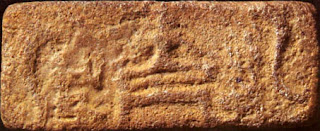
 Text on obverse of the tablet m453A: Text 1629. m453BC Seated in penance, the person is flanked on either side by a kneeling adorant, offering a pot and a hooded serpent rearing up.
Text on obverse of the tablet m453A: Text 1629. m453BC Seated in penance, the person is flanked on either side by a kneeling adorant, offering a pot and a hooded serpent rearing up.Mohenjo-daro. Sealing. Surrounded by fishes, lizard and snakes, a horned person sits in 'yoga' on a throne with hoofed legs. One side of a triangular terracotta amulet (Md 013); surface find at Mohenjo-daro in 1936, Dept. of Eastern Art, Ashmolean Museum, Oxford. [seated person penance, crocodile?]
Brief memoranda: kamaḍha ‘penance’ Rebus: kammaṭa ‘mint, coiner’; kaṇḍo ‘stool, seat’ Rebus: kāṇḍa ‘metalware’ kaṇḍa ‘fire-altar’.
Glyph: meD 'to dance' (F.)[reduplicated from me-]; me id. (M.) in Remo (Munda)(Source: D. Stampe's Munda etyma) meṭṭu to tread, trample, crush under foot, tread or place the foot upon (Te.); meṭṭu step (Ga.); mettunga steps (Ga.). maḍye to trample, tread (Malt.)(DEDR 5057) మెట్టు (p. 1027) [ meṭṭu ] meṭṭu. [Tel.] v. a. &n. To step, walk, tread. అడుగుపెట్టు, నడుచు, త్రొక్కు . "మెల్ల మెల్లన మెట్టుచుదొలగి అల్లనల్లనతలుపులండకు జేరి ." BD iv. 1523. To tread on, to trample on. To kick, to thrust with the foot.మెట్టిక meṭṭika. n. A step , మెట్టు, సోపానము (Telugu) Rebus: meD 'iron' (Mundari. Remo.) Tepe Yahya. Seal impressions of two sides of a seal. Six-legged lizard and opposing footprints shown on opposing sides of a double-sided steatite stamp seal perforated along the lateral axis. Lamberg- Karlovsky 1971: fig. 2C Shahr-i-Soktha Stamp seal shaped like a foot.
Glyph: aṭi foot, footprint (Tamil) Rebus: aḍe, aḍa, aḍi the piece of wood on which the five artisans put the article which they happen to operate upon, a support (Kannada)
Glyph: araṇe 'lizard' (Tulu) eraṇi f. ʻ anvil ʼ (Gujarati); aheraṇ, ahiraṇ, airaṇ, airṇī, haraṇ f. (Marathi) அரணை Ta. araṇai typical lizard, Lacertidae; smooth streaked lizard, Lacerta interpunctula. Ma. araṇa green house lizard, L. interpunctula. Ka. araṇe, rāṇe, rāṇi greenish kind of lizard which is said to poison by licking, L. interpunctula. Tu. araṇe id. (DEDR 204).
Glyph: bhaṭa ‘six’ (G.) rebus: baṭa = kiln (Santali) baṭa = a kind of iron (Gujarati) [Note: six legs shown on the lizard glyph]
The rebus readings are: aḍi 'anvil' airaṇ 'anvil' (for use in) baṭa 'iron working' or kiln/furnace-work.bhráṣṭra n. ʻ frying pan, gridiron ʼ MaitrS. [√bhrajj] Pk. bhaṭṭha -- m.n. ʻ gridiron ʼ; K. büṭhü f. ʻ level surface by kitchen fireplace on which vessels are put when taken off fire ʼ; S. baṭhu m. ʻ large pot in which grain is parched, large cooking fire ʼ, baṭhī f. ʻ distilling furnace ʼ; L. bhaṭṭh m. ʻ grain -- parcher's oven ʼ, bhaṭṭhī f. ʻ kiln, distillery ʼ, awāṇ. bhaṭh; P. bhaṭṭh m., °ṭhī f. ʻ furnace ʼ, bhaṭṭhā m. ʻ kiln ʼ; N. bhāṭi ʻ oven or vessel in which clothes are steamed for washing ʼ; A. bhaṭā ʻ brick -- or lime -- kiln ʼ; B. bhāṭi ʻ kiln ʼ; Or. bhāṭi ʻ brick -- kiln, distilling pot ʼ; Mth. bhaṭhī, bhaṭṭī ʻ brick -- kiln, furnace, still ʼ; Aw.lakh. bhāṭhā ʻ kiln ʼ; H. bhaṭṭhā m. ʻ kiln ʼ, bhaṭ f. ʻ kiln, oven, fireplace ʼ; M. bhaṭṭā m. ʻ pot of fire ʼ, bhaṭṭī f. ʻ forge ʼ. -- X bhástrā -- q.v. S.kcch. bhaṭṭhī keṇī ʻ distil (spirits) ʼ.(CDIAL 9656). kolmo ‘three’ (Mu.); rebus: kolami ‘smithy’ (Telugu) కొలిమి [ kolimi ] kolimi. [Tel.] n. A pit. A fire pit or furnace. ముద్దకొలిమి a smelting forge. నీళ్లకొలిమి a reservoir. కొలిమిత్తిత్తి a pair of bellows.(Telugu) పట్టడ [ paṭṭaḍa ] paṭṭaḍu. [Tel.] n. A smithy, a shop. కుమ్మరి వడ్లంగి మొదలగువారు పనిచేయు చోటు.(Telugu) Glyph: S. baṭhu m. ‘large pot in which grain is parched; L. bhaṭṭh m. ʻ grain -- parcher's oven ʼM. bhaṭṭā m. ʻ pot of fire ʼ(CDIAL 9656). Glyph: bhaṭa ‘six’ (G.) rebus: baṭa = kiln (Santali); bhaṭṭī f. ʻ forge ʼ(Marathi)(CDIAL 9656). baṭa = a kind of iron (G.) bhaṭṭhī f. ‘kiln, distillery’, awāṇ. bhaṭh; P. bhaṭṭh m., °ṭhī f. ‘furnace’, bhaṭṭhā m. ‘kiln’; S. bhaṭṭhī keṇī ‘distil (spirits) baṭa = furnace (Santali) bhrāṣṭra = furnace (Skt.) bhaṭa ‘furnace’ (G.) baṭhī f. ʻ distilling furnace' (Sindhi)
Decipherment of the Indus Script inscription on h182 Harappa tablet & another identical tablet![]() Sign 403 is a duplication of
Sign 403 is a duplication of ![]() bun-ingot shape. This shape is signified on a zebu terracotta pratimā found at Harappa and is consistent with mūhā mẽṛhẽt process of making unique bun-shaped ingots (See Santali expression and meaning described below):
bun-ingot shape. This shape is signified on a zebu terracotta pratimā found at Harappa and is consistent with mūhā mẽṛhẽt process of making unique bun-shaped ingots (See Santali expression and meaning described below):![]()
![]() Sign 403 is read: dul mūhā mẽṛhẽt 'cast iron ingot'. mūhā mẽṛhẽt = iron smelted by the Kolhes and formed into an equilateral lump a little pointed at each of four ends (Santali)
Sign 403 is read: dul mūhā mẽṛhẽt 'cast iron ingot'. mūhā mẽṛhẽt = iron smelted by the Kolhes and formed into an equilateral lump a little pointed at each of four ends (Santali)
The pictorial motif and text message together signify rebus rendering of the following expressions:
jasta, sattva mund 'svastika, 'zinc' assembly';
dul mũhã̄ कर्ण karṇa metal casting zinc ingot account
Pictorial motif of five svastika and tiger
jasta, sattva 'svastika glyph' rebus jasta, sattva 'zinc' PLUS mōṝẽ 'five' rebus munda 'Toda village or assembly'
kola 'tiger' Rebus: kol 'alloy of five metals, pancaloha' (Tamil). kul ‘tiger’ (Santali); kōlu id. (Telugu) kōlupuli = Bengal tiger (Te.) कोल्हा [ kōlhā ] कोल्हें [kōlhēṃ] A jackal (Marathi) Rebus: kol, kolhe, ‘the koles, iron smelters speaking a language akin to that of Santals’ (Santali) kol ‘working in iron’ (Tamil) kōla1 m. ʻ name of a degraded tribe ʼ Hariv.Ma. kollan blacksmith, artificer. Ko. kole·l smithy, temple in Kota village. To. kwala·l Kota smithy. Ka. kolime, kolume, kulame, kulime, kulume, kulme fire-pit, furnace; (Bell.; U.P.U.) konimi blacksmith(Gowda) kolla id. Koḍ. kollë blacksmith. Te. kolimi furnace. Go. (SR.)kollusānā to mend implements; (Ph.) kolstānā, kulsānā to forge; (Tr.) kōlstānā to repair (of ploughshares); (SR.) kolmi smithy (Voc. 948). Kuwi (F.) kolhali to forge.(DEDR 2133).
Text message on h182
dul mũhã̄ ' metal casting, bun ingot' .dul 'two' rebus: dul 'metal casting'karṇī, 'Supercargo responsible for cargo of a merchant vessel'; karṇika 'scribe, account'.
-- kol 'tiger' rebus kol 'alloy of five metals' kol 'working in iron', five, mōṝẽ svastika Indus Script hypertext signifies assembly, mondir temple
--Tiger, drummer, five svastika signify mōṝẽ 'five' rebus mandari 'drummer' munda 'Toda village or assembly' mondir 'temple.![]()
Sign 403 is a duplication of 'oval or rhombus' hieroglyph Sign 267 which has the shape of a bun ingot: mũhã̄ 'bun ingot' . Duplication signifies dula 'two' rebus: dul 'metal casting'. Thus Sign 403 reads: dul mũhã̄ ' metal casting, bun ingot'. The bun ingots are a little pointed at each end. The semantics of this shape feature is provided in the Santali word: Rebus: mũh ‘(copper) ingot’ (Santali) mũhã̄ = the quantity of iron produced at one time in a native smelting furnace of the Kolhes; iron produced by the Kolhes and formed like a four-cornered piece a little pointed at each end (Santali) Allographs: mũhe ‘face’ (Santali) The little pointed ends at each side is like a pointed nose: Ta. mūkku nose, nostril, beak, nose-shaped part of anything; mūkkaṉ man with a large or prominent nose; mukarai, mukari bottom of the nose. Ma. mūkku nose, nozzle, beak; mūkkan long-nosed. Ko. mu·k nose, funnel of bellows; mu·kn man with long nose; fem. mu·ky. To. mu·k nose (in songs); mu·ku·ṛ- (mu·ku·ṛy-) to meet (of persons, rivers); mu·ku·ṭ- (mu·ku·ṭy-) to cause to meet; ? mu·kuṟ- (mu·kuṟy-) (person, ceremony) approaches. Ka.mūgu, mū nose, forepart, snout, beak, nozzle; mūga, mūgi man with a nose. Koḍ. mu·kï nose. Tu. mūku, mūgu, mūṅku nose, beak; mūke man who snuffles or speaks through the nose; fem. mūki. Te. mukku nose, beak, end, point, tip. Kol. muŋgaḍ, (Kin.) mukk, (SR.) mukku nose. Nk. muŋgaṛ id. Nk. (Ch.) muŋgan id. Pa. muvāḍ (pl. muvācil)id. Ga. (Oll.) muŋan, (S.) muŋān, (P.) muŋgan id. Pe. muŋgel id. Manḍ. muŋgel id. Kui mungeli, (K.) muŋgi id. Kuwi (F.) mūngelli, (S.) mungeli, (Isr.) muṅgeli, (Su. P.) muŋgeli (pl. muŋgelka) id. Kur. muī˜ id. Malt. muṉyu id. (DEDR 5024).
This semantics is reinforced by the two linear strokes || dula 'two' rebus: dul 'metal casting'
The third sign of the text is a rim-of-jar Sign 342.![]() Rebus reading of Sign 342: kanda kanka 'rim of jar' कार्णिक 'relating to the ear' rebus: kanda kanka 'fire-trench account, karṇika 'scribe, account' karṇī 'supercargo',कर्णिक helmsman'. Note: Hieroglyph: कर्ण [p= 256,2] the handle or ear of a vessel RV. viii , 72 , 12 Śatapatha Brāhmaṇa ix (कात्यायन-श्रौत-सूत्र)
Rebus reading of Sign 342: kanda kanka 'rim of jar' कार्णिक 'relating to the ear' rebus: kanda kanka 'fire-trench account, karṇika 'scribe, account' karṇī 'supercargo',कर्णिक helmsman'. Note: Hieroglyph: कर्ण [p= 256,2] the handle or ear of a vessel RV. viii , 72 , 12 Śatapatha Brāhmaṇa ix (कात्यायन-श्रौत-सूत्र)
Rebus: कर्ण the helm or rudder of a ship R. कर्णी f. of °ण ifc. (e.g. अयस्-क्° and पयस्-क्°) Pa1n2. 8-3 , 46" N. of कंस's mother " , in comp. Rebus: karṇī, 'Supercargo responsible for cargo of a merchant vessel'.
See:
Horned deity seals, Mohenjo-daro: a. horned deity with pipal-leaf headdress, Mohenjo-daro (DK12050, NMP 50.296) (Courtesy of the Department of Archaeology and Museums, Government of Pakistan); b. horned deity with star motifs, Mohenjo-daro (M-305) (PARPOLA 1994:Fig. 10.9); courtesy of the Archaeological Survey of India; c. horned deity surrounded by animals, Mohenjo-daro (JOSHI – PARPOLA 1987:M-304); courtesy of the Archaeological Survey of India.
ṭhaṭera 'buffalo horns'. Rebus: ṭhaṭerā 'brass worker'meḍha 'polar star' (Marathi). Rebus: meḍ 'iron' (Ho.Mu.)
kamadha '
m453B. Scarf as pigtail of seated person.Kneeling adorant and serpent on the field.
khaṇḍiyo [cf. khaṇḍaṇī a tribute] tributary; paying a tribute to a superior king (Gujarti) Rebus: khaṇḍaran, khaṇḍrun ‘pit furnace’ (Santali)
paṭa. 'serpent hood' Rebus: pata ‘sharpness (of knife), tempered (metal). padm ‘tempered iron’ (Kota)
Seated person in penance. Wears a scarf as pigtail and curved horns with embedded stars and a twig.
mēḍha The polar star. (Marathi) Rebus: meḍ ‘iron’ (Ho.) dula ‘pair’ (Kashmiri); Rebus: dul ‘cast (metal)’(Santali) ḍabe, ḍabea ‘large horns, with a sweeping upward curve, applied to buffaloes’ (Santali) Rebus: ḍab, ḍhimba, ḍhompo ‘lump (ingot?)’, clot, make a lump or clot, coagulate, fuse, melt together (Santali) kūtī = bunch of twigs (Skt.) Rebus: kuṭhi = (smelter) furnace (Santali) The narrative on this metalware catalog is thus: (smelter) furnace for iron and for fusing together cast metal. kamaḍha ‘penance’.Rebus 1: kaṇḍ ‘stone (ore) metal’.Rebus 2: kampaṭṭa‘mint’.
Proto-Elamite seal impressions, Susa. Seated bulls in penance posture. (After Amiet 1980: nos. 581, 582).Hieroglyph: kamaDha 'penance' (Prakritam) Rebus: kammaTTa 'coiner, mint'Hieroglyph: dhanga 'mountain range' Rebus: dhangar 'blacksmith'
Hieroglyph: rango 'buffalo' Rebus: rango 'pewter'.
Mohenjo-daro. Square seal depicting a nude male deity with three faces, seated in yogic position on a throne, wearing bangles on both arms and an elaborate headdress. Five symbols of the Indus script appear on either side of the headdress which is made of two outward projecting buffalo style curved horns, with two upward projecting points. A single branch with three pipal leaves rises from the middle of the headdress.
Seven bangles are depicted on the left arm and six on the right, with the hands resting on the knees. The heels are pressed together under the groin and the feet project beyond the edge of the throne. The feet of the throne are carved with the hoof of a bovine as is seen on the bull and unicorn seals. The seal may not have been fired, but the stone is very hard. A grooved and perforated boss is present on the back of the seal.
Material: tan steatite Dimensions: 2.65 x 2.7 cm, 0.83 to 0.86 thickness Mohenjo-daro, DK 12050
Islamabad Museum, NMP 50.296 Mackay 1938: 335, pl. LXXXVII, 222 Hieroglyph: kamaḍha ‘penance’ (Pkt.) Rebus 1: kampaṭṭa ‘mint’ (Ma.) kamaṭa = portable furnace for melting precious metals (Te.);Rebus 2: kaṇḍa ‘fire-altar' (Santali); kan ‘copper’ (Ta.)
Hieroglyph: karã̄ n. pl. ʻwristlets, bangles ʼ (Gujarati); kara 'hand' (Rigveda) Rebus: khAr 'blacksmith' (Kashmiri) The bunch of twigs = ku_di_, ku_t.i_ (Skt.lex.) ku_di_ (also written as ku_t.i_ in manuscripts) occurs in the Atharvaveda (AV 5.19.12) and Kaus’ika Su_tra (Bloomsfield’s ed.n, xliv. cf. Bloomsfield, American Journal of Philology, 11, 355; 12,416; Roth, Festgruss an Bohtlingk,98) denotes it as a twig. This is identified as that of Badari_, the jujube tied to the body of the dead to efface their traces. (See Vedic Index, I, p. 177).[Note the twig adoring the head-dress of a horned, standing person]![]() m1186 seal. kaula— m. ‘worshipper of Śakti according to left—hand ritual’, khōla—3 ‘lame’; Khot. kūra— ‘crooked’ BSOS ix 72 and poss. Sk. kōra— m. ‘movable joint’ Suśr.] Ash. kṓlƏ ‘curved, crooked’; Dm. kōla ‘crooked’, Tir. kṓolƏ; Paš. kōlā́ ‘curved, crooked’, Shum. kolā́ṇṭa; Kho. koli ‘crooked’, (Lor.) also ‘lefthand, left’; Bshk. kōl ‘crooked’; Phal. kūulo; Sh. kōlu̯ ‘curved, crooked’ (CDIAL 3533). Rebus: kol ‘pancaloha’ (Tamil)
m1186 seal. kaula— m. ‘worshipper of Śakti according to left—hand ritual’, khōla—3 ‘lame’; Khot. kūra— ‘crooked’ BSOS ix 72 and poss. Sk. kōra— m. ‘movable joint’ Suśr.] Ash. kṓlƏ ‘curved, crooked’; Dm. kōla ‘crooked’, Tir. kṓolƏ; Paš. kōlā́ ‘curved, crooked’, Shum. kolā́ṇṭa; Kho. koli ‘crooked’, (Lor.) also ‘lefthand, left’; Bshk. kōl ‘crooked’; Phal. kūulo; Sh. kōlu̯ ‘curved, crooked’ (CDIAL 3533). Rebus: kol ‘pancaloha’ (Tamil)
bhaTa 'worshipper' Rebus: bhaTa 'furnace' baTa 'iron' (Gujarati)saman 'make an offering (Santali) samanon 'gold' (Santali)minDAl 'markhor' (Torwali) meDho 'ram' (Gujarati)(CDIAL 10120) Rebus: me~Rhet, meD 'iron' (Mu.Ho.Santali)heraka 'spy' (Samskritam) Rebus:eraka 'molten metal, copper'maNDa 'branch, twig' (Telugu) Rebus: maNDA 'warehouse, workshop' (Konkani)\karibha, jata kola Rebus: karba, ib, jasta, 'iron, zinc, metal (alloy of five metals)maNDi 'kneeling position' Rebus: mADa 'shrine; mandil 'temple' (Santali)
dhatu 'scarf' Rebus: dhatu 'mineral ore' (Santali)
The rice plant adorning the curved horn of the person (woman?) with the pig-tail is kolmo; read rebus, kolme ‘smithy’. Smithy of what? Kol ‘pancaloha’. The curving horn is: kod.u = horn; rebus: kod. artisan’s workshop (Kuwi)
The long curving horns may also connote a ram on h177B tablet:![clip_image061]() h177B
h177B![clip_image062[4]]() 4316 Pict-115: From R.—a person standing under an ornamental arch; a kneeling adorant; a ram with long curving horns.The ram read rebus: me~d. ‘iron’; glyph: me_n.d.ha ram; min.d.a_l markhor (Tor.); meh ram (H.); mei wild goat (WPah.) me~r.hwa_ a bullock with curved horns like a ram’s (Bi.) me~r.a_, me~d.a_ ram with curling horns (H.)
4316 Pict-115: From R.—a person standing under an ornamental arch; a kneeling adorant; a ram with long curving horns.The ram read rebus: me~d. ‘iron’; glyph: me_n.d.ha ram; min.d.a_l markhor (Tor.); meh ram (H.); mei wild goat (WPah.) me~r.hwa_ a bullock with curved horns like a ram’s (Bi.) me~r.a_, me~d.a_ ram with curling horns (H.)
Hieroglyph: kamadha 'penance' Rebus: kammata 'coiner, mint'.Prakritam gloss: kamad.ha, kamat.ha, kamad.haka, kamad.haga, kamad.haya= a type of penance.
The venerated, person seated in a type of penance has been rendered in Indus Script cipher as kamaDha 'penance' (Prakritam) Rebus: kammaTTa 'coiner, mint'. What did the kneeling adorant as Signs 45 and 46 signifY? I have suggested the cipher: bhaTa 'worshipper' rebus: bhaTa 'furnace'.
![]() Prakritam lexis.
Prakritam lexis.![]()
Ganweriwala tablet. Ganeriwala or Ganweriwala (Urdu: گنےریوالا Punjabi: گنیریوالا) is a Sarasvati-Sindhu civilization site in Cholistan, Punjab, Pakistan.
Glyphs on a broken molded tablet, Ganweriwala. The reverse includes the 'rim-of-jar' glyph in a 3-glyph text. Observe shows a person seated on a stool and a kneeling adorant below.
Hieroglyph: kamadha '
1. kuṭila ‘bent’; rebus: kuṭila, katthīl = bronze (8 parts copper and 2 parts tin) [cf. āra-kūṭa, ‘brass’ (Skt.) (CDIAL 3230)
2. Glyph of ‘rim of jar’: kárṇaka m. ʻ projection on the side of a vessel, handle ʼ ŚBr. [kárṇa -- ]Pa. kaṇṇaka -- ʻ having ears or corners ʼ; (CDIAL 2831) kaṇḍa kanka; Rebus: furnace account (scribe). kaṇḍ = fire-altar (Santali); kan = copper (Tamil) khanaka m. one who digs , digger , excavator Rebus: karanikamu. Clerkship: the office of a Karanam or clerk. (Telugu) káraṇa n. ʻ act, deed ʼ RV. [√kr̥1] Pa. karaṇa -- n. ʻdoingʼ; NiDoc. karana, kaṁraṁna ʻworkʼ; Pk. karaṇa -- n. ʻinstrumentʼ(CDIAL 2790)
3. khareḍo = a currycomb (G.) Rebus: kharādī ‘ turner’ (G.)
Hieroglyph: मेढा [mēḍhā] A twist or tangle arising in thread or cord, a curl or snarl (Marathi). Rebus: meḍ 'iron, copper' (Munda. Slavic) mẽṛhẽt, meD 'iron' (Mu.Ho.Santali)meď 'copper' (Slovak)
Ganeriwala is situated near the Indian border on the dry river bed of the Ghaggar-Hakra (also called the Sarasvati River), now a part of vast desert. It is spread over 80 hectares and comparable in size with the largest sites of the Indus Valley Civilization, such as Mohenjo-daro. A terrecotta tablet is a significant find. In this seal, a cross legged person (suggested as yogic posture) and a kneeling person below a tree and upon a tree are depicted. Such kneeling persons on tree, particularly in front of a tiger like animal, are shown in tablets or seals found at Harappa (H 163 a), Mohenjadaro(M 309 a) and Kalibangan (K 49a). http://en.wikipedia.org/wiki/Ganeriwala
![]()
Excerpts from a recent report (Dr. Vasant Shinde and Dr. Rick Willis) on copper plates with Indus script inscriptions:"The copper plates described in this article are believed to date from the Mature Harappan period, 2600–1900 BC. They were given to the second author in 2011, who realized that the plates were unusual, as they were large and robust, and bore mirrored Indus script as found in seals, but the inscriptions were relatively finely incised and unlikely capable of leaving satisfactory impressions, as with a seal...The copper plates superficially resemble large Indus Valley seals, as seven of the plates bear an image of an animal or person, plus reversed text. Two of the copper plates bear only mirrored Indus characters boldly engraved in two rows. The plates are illustrated in Figure 2...- kamaḍha ‘penance’ Rebus: kammaṭa ‘mint, coiner’.
- koḍ = horns (Santali); koḍ ‘workshop’ (G.)
- Pair of fishes (hieroglyph on the chest of the seated person): dula 'pair' Rebus: dul 'cast metal' ayo 'fish' Rebus: ayas 'metal alloy'; aya'iron' (Gujarati). Thus dul aya 'cast metal alloy'.
Text on obverse of the tablet m453A: Text 1629. m453BC Seated in penance, the person is flanked on either side by a kneeling adorant, offering a pot and a hooded serpent rearing up.
Glyph: kaṇḍo ‘stool’. Rebus; kaṇḍ ‘furnace’. Vikalpa: kaṇḍ ‘stone (ore) metal’. Rebus: kamaḍha ‘penance’. Rebus 1: kaṇḍ ‘stone ore’. Rebus 2: kampaṭṭa ‘mint’. Glyph: ‘serpent hood’: paṭa. Rebus: pata ‘sharpness (of knife), tempered (metal). padm ‘tempered iron’ (Ko.) Glyph: rimless pot: baṭa. Rebus: bhaṭa ‘smelter, furnace’. It appears that the message of the glyphics is about a mint or metal workshop which produces sharpened, tempered iron (stone ore) using a furnace.
Rebus readings of glyphs on text of inscription:
koṇḍa bend (Ko.); Tu. Kōḍi corner; kōṇṭu angle, corner, crook. Nk. Kōnṭa corner (DEDR 2054b) G. khū̃ṭṛī f. ʻangleʼRebus: kõdā ‘to turn in a lathe’(B.) कोंद kōnda ‘engraver, lapidary setting or infixing gems’ (Marathi) koḍ ‘artisan’s workshop’ (Kuwi) koḍ = place where artisans work (G.) ācāri koṭṭya ‘smithy’ (Tu.) कोंडण [kōṇḍaṇa] f A fold or pen. (Marathi) B. kõdā ‘to turn in a lathe’; Or.kū̆nda ‘lathe’, kũdibā, kū̃d ‘to turn’ (→ Drav. Kur. Kū̃d ’ lathe’) (CDIAL 3295)
aṭar ‘a splinter’ (Ma.) aṭaruka ‘to burst, crack, sli off,fly open; aṭarcca ’ splitting, a crack’; aṭarttuka ‘to split, tear off, open (an oyster) (Ma.); aḍaruni ‘to crack’ (Tu.) (DEDR 66) Rebus: aduru ‘native, unsmelted metal’ (Kannada)
ãs = scales of fish (Santali); rebus: aya ‘metal, iron’ (Gujarati.) cf. cognate to amśu 'soma' in Rigveda: ancu 'iron' (Tocharian)
G.karã̄ n. pl. ‘wristlets, bangles’; S. karāī f. ’wrist’ (CDIAL 2779). Rebus: khār खार् ‘blacksmith’ (Kashmiri)
dula ‘pair’; rebus dul ‘cast (metal)’
Glyph of ‘rim of jar’: kárṇaka m. ʻ projection on the side of a vessel, handle ʼ ŚBr. [kárṇa -- ]Pa. kaṇṇaka -- ʻ having ears or corners ʼ; (CDIAL 2831) kaṇḍa kanka; Rebus: furnace account (scribe). kaṇḍ = fire-altar (Santali); kan = copper (Tamil) khanaka m. one who digs , digger , excavator Rebus: karanikamu. Clerkship: the office of a Karanam or clerk. (Telugu) káraṇa n. ʻ act, deed ʼ RV. [√kr̥1] Pa. karaṇa -- n. ʻdoingʼ; NiDoc. karana, kaṁraṁna ʻworkʼ; Pk. karaṇa -- n. ʻinstrumentʼ(CDIAL 2790)
The suggested rebus readings indicate that the Indus writing served the purpose of artisans/traders to create metalware, stoneware, mineral catalogs -- products with which they carried on their life-activities in an evolving Bronze Age.
Mohenjo-daro. Sealing. Surrounded by fishes, lizard and snakes, a horned person sits in 'yoga' on a throne with hoofed legs. One side of a triangular terracotta amulet (Md 013); surface find at Mohenjo-daro in 1936, Dept. of Eastern Art, Ashmolean Museum, Oxford. [seated person penance, crocodile?]
Brief memoranda: kamaḍha ‘penance’ Rebus: kammaṭa ‘mint, coiner’; kaṇḍo ‘stool, seat’ Rebus: kāṇḍa ‘metalware’ kaṇḍa ‘fire-altar’.
kAru 'crocodile' Rebus: kAru 'artisan'.
Hieroglyphs (allographs):
kamaḍha 'penance' (Prakriam)
kamḍa, khamḍa 'copulation' (Santali)
kamaṭha crab (Skt.)
kamaṛkom = fig leaf (Santali.lex.) kamarmaṛā (Has.), kamaṛkom (Nag.); the petiole or stalk of a leaf (Mundari.lex.) kamat.ha = fig leaf, religiosa (Sanskrit)
kamāṭhiyo = archer; kāmaṭhum = a bow; kāmaḍ, kāmaḍum = a chip of bamboo (G.) kāmaṭhiyo a bowman; an archer (Sanskrit)
Rebus: kammaṭi a coiner (Ka.); kampaṭṭam coinage, coin, mint (Ta.) kammaṭa = mint, gold furnace (Te.) kamaṭa = portable furnace for melting precious metals (Telugu); kampaṭṭam = mint (Tamil)
Glyph: meD 'to dance' (F.)[reduplicated from me-]; me id. (M.) in Remo (Munda)(Source: D. Stampe's Munda etyma) meṭṭu to tread, trample, crush under foot, tread or place the foot upon (Te.); meṭṭu step (Ga.); mettunga steps (Ga.). maḍye to trample, tread (Malt.)(DEDR 5057) మెట్టు (p. 1027) [ meṭṭu ] meṭṭu. [Tel.] v. a. &n. To step, walk, tread. అడుగుపెట్టు, నడుచు, త్రొక్కు . "మెల్ల మెల్లన మెట్టుచుదొలగి అల్లనల్లనతలుపులండకు జేరి ." BD iv. 1523. To tread on, to trample on. To kick, to thrust with the foot.మెట్టిక meṭṭika. n. A step , మెట్టు, సోపానము (Telugu)
Tepe Yahya. Seal impressions of two sides of a seal. Six-legged lizard and opposing footprints shown on opposing sides of a double-sided steatite stamp seal perforated along the lateral axis. Lamberg- Karlovsky 1971: fig. 2C Shahr-i-Soktha Stamp seal shaped like a foot.
Glyph: aṭi foot, footprint (Tamil) Rebus: aḍe, aḍa, aḍi the piece of wood on which the five artisans put the article which they happen to operate upon, a support (Kannada)
Glyph: araṇe 'lizard' (Tulu) eraṇi f. ʻ anvil ʼ (Gujarati); aheraṇ, ahiraṇ, airaṇ, airṇī, haraṇ f. (Marathi) அரணை Ta. araṇai typical lizard, Lacertidae; smooth streaked lizard, Lacerta interpunctula. Ma. araṇa green house lizard, L. interpunctula. Ka. araṇe, rāṇe, rāṇi greenish kind of lizard which is said to poison by licking, L. interpunctula. Tu. araṇe id. (DEDR 204).
Glyph: bhaṭa ‘six’ (G.) rebus: baṭa = kiln (Santali) baṭa = a kind of iron (Gujarati) [Note: six legs shown on the lizard glyph]
The rebus readings are: aḍi 'anvil' airaṇ 'anvil' (for use in) baṭa 'iron working' or kiln/furnace-work.
Glyph: aṭi foot, footprint (Tamil) Rebus: aḍe, aḍa, aḍi the piece of wood on which the five artisans put the article which they happen to operate upon, a support (Kannada)
Glyph: araṇe 'lizard' (Tulu) eraṇi f. ʻ anvil ʼ (Gujarati); aheraṇ, ahiraṇ, airaṇ, airṇī, haraṇ f. (Marathi) அரணை Ta. araṇai typical lizard, Lacertidae; smooth streaked lizard, Lacerta interpunctula. Ma. araṇa green house lizard, L. interpunctula. Ka. araṇe, rāṇe, rāṇi greenish kind of lizard which is said to poison by licking, L. interpunctula. Tu. araṇe id. (DEDR 204).
Glyph: bhaṭa ‘six’ (G.) rebus: baṭa = kiln (Santali) baṭa = a kind of iron (Gujarati) [Note: six legs shown on the lizard glyph]
The rebus readings are: aḍi 'anvil' airaṇ 'anvil' (for use in) baṭa 'iron working' or kiln/furnace-work.
bhráṣṭra n. ʻ frying pan, gridiron ʼ MaitrS. [√bhrajj] Pk. bhaṭṭha -- m.n. ʻ gridiron ʼ; K. büṭhü f. ʻ level surface by kitchen fireplace on which vessels are put when taken off fire ʼ; S. baṭhu m. ʻ large pot in which grain is parched, large cooking fire ʼ, baṭhī f. ʻ distilling furnace ʼ; L. bhaṭṭh m. ʻ grain -- parcher's oven ʼ, bhaṭṭhī f. ʻ kiln, distillery ʼ, awāṇ. bhaṭh; P. bhaṭṭh m., °ṭhī f. ʻ furnace ʼ, bhaṭṭhā m. ʻ kiln ʼ; N. bhāṭi ʻ oven or vessel in which clothes are steamed for washing ʼ; A. bhaṭā ʻ brick -- or lime -- kiln ʼ; B. bhāṭi ʻ kiln ʼ; Or. bhāṭi ʻ brick -- kiln, distilling pot ʼ; Mth. bhaṭhī, bhaṭṭī ʻ brick -- kiln, furnace, still ʼ; Aw.lakh. bhāṭhā ʻ kiln ʼ; H. bhaṭṭhā m. ʻ kiln ʼ, bhaṭ f. ʻ kiln, oven, fireplace ʼ; M. bhaṭṭā m. ʻ pot of fire ʼ, bhaṭṭī f. ʻ forge ʼ. -- X bhástrā -- q.v. S.kcch. bhaṭṭhī keṇī ʻ distil (spirits) ʼ.(CDIAL 9656). kolmo ‘three’ (Mu.); rebus: kolami ‘smithy’ (Telugu) కొలిమి [ kolimi ] kolimi. [Tel.] n. A pit. A fire pit or furnace. ముద్దకొలిమి a smelting forge. నీళ్లకొలిమి a reservoir. కొలిమిత్తిత్తి a pair of bellows.(Telugu) పట్టడ [ paṭṭaḍa ] paṭṭaḍu. [Tel.] n. A smithy, a shop. కుమ్మరి వడ్లంగి మొదలగువారు పనిచేయు చోటు.(Telugu) Glyph: S. baṭhu m. ‘large pot in which grain is parched; L. bhaṭṭh m. ʻ grain -- parcher's oven ʼM. bhaṭṭā m. ʻ pot of fire ʼ(CDIAL 9656). Glyph: bhaṭa ‘six’ (G.) rebus: baṭa = kiln (Santali); bhaṭṭī f. ʻ forge ʼ(Marathi)(CDIAL 9656). baṭa = a kind of iron (G.) bhaṭṭhī f. ‘kiln, distillery’, awāṇ. bhaṭh; P. bhaṭṭh m., °ṭhī f. ‘furnace’, bhaṭṭhā m. ‘kiln’; S. bhaṭṭhī keṇī ‘distil (spirits) baṭa = furnace (Santali) bhrāṣṭra = furnace (Skt.) bhaṭa ‘furnace’ (G.) baṭhī f. ʻ distilling furnace' (Sindhi)
Decipherment of the Indus Script inscription on h182 Harappa tablet & another identical tablet
The pictorial motif and text message together signify rebus rendering of the following expressions:
jasta, sattva mund 'svastika, 'zinc' assembly';
dul mũhã̄ कर्ण karṇa metal casting zinc ingot account
Pictorial motif of five svastika and tiger
jasta, sattva 'svastika glyph' rebus jasta, sattva 'zinc' PLUS mōṝẽ 'five' rebus munda 'Toda village or assembly'
kola 'tiger' Rebus: kol 'alloy of five metals, pancaloha' (Tamil). kul ‘tiger’ (Santali); kōlu id. (Telugu) kōlupuli = Bengal tiger (Te.) कोल्हा [ kōlhā ] कोल्हें [kōlhēṃ] A jackal (Marathi) Rebus: kol, kolhe, ‘the koles, iron smelters speaking a language akin to that of Santals’ (Santali) kol ‘working in iron’ (Tamil) kōla1 m. ʻ name of a degraded tribe ʼ Hariv.Ma. kollan blacksmith, artificer. Ko. kole·l smithy, temple in Kota village. To. kwala·l Kota smithy. Ka. kolime, kolume, kulame, kulime, kulume, kulme fire-pit, furnace; (Bell.; U.P.U.) konimi blacksmith(Gowda) kolla id. Koḍ. kollë blacksmith.
Te. kolimi furnace. Go. (SR.)kollusānā to mend implements; (Ph.) kolstānā, kulsānā to forge; (Tr.) kōlstānā to repair (of ploughshares); (SR.) kolmi smithy (Voc. 948). Kuwi (F.) kolhali to forge.(DEDR 2133).
Text message on h182
dul mũhã̄ ' metal casting, bun ingot' .
dul 'two' rebus: dul 'metal casting'
karṇī, 'Supercargo responsible for cargo of a merchant vessel'; karṇika 'scribe, account'.
-- kol 'tiger' rebus kol 'alloy of five metals' kol 'working in iron', five, mōṝẽ svastika Indus Script hypertext signifies assembly, mondir temple
--Tiger, drummer, five svastika signify mōṝẽ 'five' rebus mandari 'drummer' munda 'Toda village or assembly' mondir 'temple.
Sign 403 is a duplication of 'oval or rhombus' hieroglyph Sign 267 which has the shape of a bun ingot: mũhã̄ 'bun ingot' . Duplication signifies dula 'two' rebus: dul 'metal casting'. Thus Sign 403 reads: dul mũhã̄ ' metal casting, bun ingot'. The bun ingots are a little pointed at each end. The semantics of this shape feature is provided in the Santali word: Rebus: mũh ‘(copper) ingot’ (Santali) mũhã̄ = the quantity of iron produced at one time in a native smelting furnace of the Kolhes; iron produced by the Kolhes and formed like a four-cornered piece a little pointed at each end (Santali) Allographs: mũhe ‘face’ (Santali) The little pointed ends at each side is like a pointed nose: Ta. mūkku nose, nostril, beak, nose-shaped part of anything; mūkkaṉ man with a large or prominent nose; mukarai, mukari bottom of the nose. Ma. mūkku nose, nozzle, beak; mūkkan long-nosed. Ko. mu·k nose, funnel of bellows; mu·kn man with long nose; fem. mu·ky. To. mu·k nose (in songs); mu·ku·ṛ- (mu·ku·ṛy-) to meet (of persons, rivers); mu·ku·ṭ- (mu·ku·ṭy-) to cause to meet; ? mu·kuṟ- (mu·kuṟy-) (person, ceremony) approaches. Ka.mūgu, mū nose, forepart, snout, beak, nozzle; mūga, mūgi man with a nose. Koḍ. mu·kï nose. Tu. mūku, mūgu, mūṅku nose, beak; mūke man who snuffles or speaks through the nose; fem. mūki. Te. mukku nose, beak, end, point, tip. Kol. muŋgaḍ, (Kin.) mukk, (SR.) mukku nose. Nk. muŋgaṛ id. Nk. (Ch.) muŋgan id. Pa. muvāḍ (pl. muvācil)id. Ga. (Oll.) muŋan, (S.) muŋān, (P.) muŋgan id. Pe. muŋgel id. Manḍ. muŋgel id. Kui mungeli, (K.) muŋgi id. Kuwi (F.) mūngelli, (S.) mungeli, (Isr.) muṅgeli, (Su. P.) muŋgeli (pl. muŋgelka) id. Kur. muī˜ id. Malt. muṉyu id. (DEDR 5024).
This semantics is reinforced by the two linear strokes || dula 'two' rebus: dul 'metal casting'
The third sign of the text is a rim-of-jar Sign 342.
| Rebus: कर्ण the helm or rudder of a ship R. कर्णी f. of °ण ifc. (e.g. अयस्-क्° and पयस्-क्°) Pa1n2. 8-3 , 46" N. of कंस's mother " , in comp. Rebus: karṇī, 'Supercargo responsible for cargo of a merchant vessel'. See: |
Horned deity seals, Mohenjo-daro: a. horned deity with pipal-leaf headdress, Mohenjo-daro (DK12050, NMP 50.296) (Courtesy of the Department of Archaeology and Museums, Government of Pakistan); b. horned deity with star motifs, Mohenjo-daro (M-305) (PARPOLA 1994:Fig. 10.9); courtesy of the Archaeological Survey of India; c. horned deity surrounded by animals, Mohenjo-daro (JOSHI – PARPOLA 1987:M-304); courtesy of the Archaeological Survey of India.
ṭhaṭera 'buffalo horns'. Rebus: ṭhaṭerā 'brass worker'
meḍha 'polar star' (Marathi). Rebus: meḍ 'iron' (Ho.Mu.)
kamadha '
karã̄ n. pl. wristlets, banglesRebus: khAr 'blacksmith, iron worker'
rango 'buffalo' Rebus:rango 'pewter'
kari 'elephant' ibha 'elephant' Rebus: karba 'iron' ib 'iron'
kola 'tiger' Rebus: kol 'working in iron'
gaNDA 'rhinoceros' Rebus: kaNDa 'im;lements'
mlekh 'antelope, goat' Rebus: milakkha 'copper'
meD 'body' Rebus: meD 'iron''copper'
dhatu 'scarf' Rebus: dhatu 'mineral
m453B. Scarf as pigtail of seated person.Kneeling adorant and serpent on the field.
khaṇḍiyo [cf. khaṇḍaṇī a tribute] tributary; paying a tribute to a superior king (Gujarti) Rebus: khaṇḍaran, khaṇḍrun ‘pit furnace’ (Santali)
paṭa. 'serpent hood' Rebus: pata ‘sharpness (of knife), tempered (metal). padm ‘tempered iron’ (Kota)
Seated person in penance. Wears a scarf as pigtail and curved horns with embedded stars and a twig.
mēḍha The polar star. (Marathi) Rebus: meḍ ‘iron’ (Ho.) dula ‘pair’ (Kashmiri); Rebus: dul ‘cast (metal)’(Santali) ḍabe, ḍabea ‘large horns, with a sweeping upward curve, applied to buffaloes’ (Santali) Rebus: ḍab, ḍhimba, ḍhompo ‘lump (ingot?)’, clot, make a lump or clot, coagulate, fuse, melt together (Santali) kūtī = bunch of twigs (Skt.) Rebus: kuṭhi = (smelter) furnace (Santali) The narrative on this metalware catalog is thus: (smelter) furnace for iron and for fusing together cast metal. kamaḍha ‘penance’.Rebus 1: kaṇḍ ‘stone (ore) metal’.Rebus 2: kampaṭṭa‘mint’.
Proto-Elamite seal impressions, Susa. Seated bulls in penance posture. (After Amiet 1980: nos. 581, 582).
Hieroglyph: kamaDha 'penance' (Prakritam) Rebus: kammaTTa 'coiner, mint'
Hieroglyph: dhanga 'mountain range' Rebus: dhangar 'blacksmith'
Hieroglyph: rango 'buffalo' Rebus: rango 'pewter'.
Hieroglyph: rango 'buffalo' Rebus: rango 'pewter'.
Mohenjo-daro. Square seal depicting a nude male deity with three faces, seated in yogic position on a throne, wearing bangles on both arms and an elaborate headdress. Five symbols of the Indus script appear on either side of the headdress which is made of two outward projecting buffalo style curved horns, with two upward projecting points. A single branch with three pipal leaves rises from the middle of the headdress.
Seven bangles are depicted on the left arm and six on the right, with the hands resting on the knees. The heels are pressed together under the groin and the feet project beyond the edge of the throne. The feet of the throne are carved with the hoof of a bovine as is seen on the bull and unicorn seals. The seal may not have been fired, but the stone is very hard. A grooved and perforated boss is present on the back of the seal.
Material: tan steatite Dimensions: 2.65 x 2.7 cm, 0.83 to 0.86 thickness Mohenjo-daro, DK 12050
Islamabad Museum, NMP 50.296 Mackay 1938: 335, pl. LXXXVII, 222
Hieroglyph: kamaḍha ‘penance’ (Pkt.) Rebus 1: kampaṭṭa ‘mint’ (Ma.) kamaṭa = portable furnace for melting precious metals (Te.);Rebus 2: kaṇḍa ‘fire-altar' (Santali); kan ‘copper’ (Ta.)
Hieroglyph: karã̄ n. pl. ʻwristlets, bangles ʼ (Gujarati); kara 'hand' (Rigveda) Rebus: khAr 'blacksmith' (Kashmiri)
The bunch of twigs = ku_di_, ku_t.i_ (Skt.lex.) ku_di_ (also written as ku_t.i_ in manuscripts) occurs in the Atharvaveda (AV 5.19.12) and Kaus’ika Su_tra (Bloomsfield’s ed.n, xliv. cf. Bloomsfield, American Journal of Philology, 11, 355; 12,416; Roth, Festgruss an Bohtlingk,98) denotes it as a twig. This is identified as that of Badari_, the jujube tied to the body of the dead to efface their traces. (See Vedic Index, I, p. 177).[Note the twig adoring the head-dress of a horned, standing person]

m1186 seal. kaula— m. ‘worshipper of Śakti according to left—hand ritual’, khōla—3 ‘lame’; Khot. kūra— ‘crooked’ BSOS ix 72 and poss. Sk. kōra— m. ‘movable joint’ Suśr.] Ash. kṓlƏ ‘curved, crooked’; Dm. kōla ‘crooked’, Tir. kṓolƏ; Paš. kōlā́ ‘curved, crooked’, Shum. kolā́ṇṭa; Kho. koli ‘crooked’, (Lor.) also ‘lefthand, left’; Bshk. kōl ‘crooked’; Phal. kūulo; Sh. kōlu̯ ‘curved, crooked’ (CDIAL 3533).
Rebus: kol ‘pancaloha’ (Tamil)
bhaTa 'worshipper' Rebus: bhaTa 'furnace' baTa 'iron' (Gujarati)
saman 'make an offering (Santali) samanon 'gold' (Santali)
minDAl 'markhor' (Torwali) meDho 'ram' (Gujarati)(CDIAL 10120) Rebus: me~Rhet, meD 'iron' (Mu.Ho.Santali)
heraka 'spy' (Samskritam) Rebus:eraka 'molten metal, copper'
maNDa 'branch, twig' (Telugu) Rebus: maNDA 'warehouse, workshop' (Konkani)\karibha, jata kola Rebus: karba, ib, jasta, 'iron, zinc, metal (alloy of five metals)
maNDi 'kneeling position' Rebus: mADa 'shrine; mandil 'temple' (Santali)
dhatu 'scarf' Rebus: dhatu 'mineral ore' (Santali)
The rice plant adorning the curved horn of the person (woman?) with the pig-tail is kolmo; read rebus, kolme ‘smithy’. Smithy of what? Kol ‘pancaloha’. The curving horn is: kod.u = horn; rebus: kod. artisan’s workshop (Kuwi)
The long curving horns may also connote a ram on h177B tablet:
 h177B
h177B![clip_image062[4]](http://kalyan97.files.wordpress.com/2007/06/clip-image0624-thumb.jpg?w=99&h=45) 4316 Pict-115: From R.—a person standing under an ornamental arch; a kneeling adorant; a ram with long curving horns.
4316 Pict-115: From R.—a person standing under an ornamental arch; a kneeling adorant; a ram with long curving horns.The ram read rebus: me~d. ‘iron’; glyph: me_n.d.ha ram; min.d.a_l markhor (Tor.); meh ram (H.); mei wild goat (WPah.) me~r.hwa_ a bullock with curved horns like a ram’s (Bi.) me~r.a_, me~d.a_ ram with curling horns (H.)
Hieroglyph: kamadha 'penance' Rebus: kammata 'coiner, mint'.
Prakritam gloss: kamad.ha, kamat.ha, kamad.haka, kamad.haga, kamad.haya= a type of penance.
The venerated, person seated in a type of penance has been rendered in Indus Script cipher as kamaDha 'penance' (Prakritam) Rebus: kammaTTa 'coiner, mint'. What did the kneeling adorant as Signs 45 and 46 signifY? I have suggested the cipher: bhaTa 'worshipper' rebus: bhaTa 'furnace'.
![]() Prakritam lexis.
Prakritam lexis.
The venerated, person seated in a type of penance has been rendered in Indus Script cipher as kamaDha 'penance' (Prakritam) Rebus: kammaTTa 'coiner, mint'. What did the kneeling adorant as Signs 45 and 46 signifY? I have suggested the cipher: bhaTa 'worshipper' rebus: bhaTa 'furnace'.

Ganweriwala tablet. Ganeriwala or Ganweriwala (Urdu: گنےریوالا Punjabi: گنیریوالا) is a Sarasvati-Sindhu civilization site in Cholistan, Punjab, Pakistan.
Glyphs on a broken molded tablet, Ganweriwala. The reverse includes the 'rim-of-jar' glyph in a 3-glyph text. Observe shows a person seated on a stool and a kneeling adorant below.
Hieroglyph: kamadha '
Reading rebus three glyphs of text on Ganweriwala tablet: brass-worker, scribe, turner:
1. kuṭila ‘bent’; rebus: kuṭila, katthīl = bronze (8 parts copper and 2 parts tin) [cf. āra-kūṭa, ‘brass’ (Skt.) (CDIAL 3230)
2. Glyph of ‘rim of jar’: kárṇaka m. ʻ projection on the side of a vessel, handle ʼ ŚBr. [kárṇa -- ]Pa. kaṇṇaka -- ʻ having ears or corners ʼ; (CDIAL 2831) kaṇḍa kanka; Rebus: furnace account (scribe). kaṇḍ = fire-altar (Santali); kan = copper (Tamil) khanaka m. one who digs , digger , excavator Rebus: karanikamu. Clerkship: the office of a Karanam or clerk. (Telugu) káraṇa n. ʻ act, deed ʼ RV. [√kr̥1] Pa. karaṇa -- n. ʻdoingʼ; NiDoc. karana, kaṁraṁna ʻworkʼ; Pk. karaṇa -- n. ʻinstrumentʼ(CDIAL 2790)
3. khareḍo = a currycomb (G.) Rebus: kharādī ‘ turner’ (G.)
Hieroglyph: मेढा [mēḍhā] A twist or tangle arising in thread or cord, a curl or snarl (Marathi). Rebus: meḍ 'iron, copper' (Munda. Slavic) mẽṛhẽt, meD 'iron' (Mu.Ho.Santali)
meď 'copper' (Slovak)
Excerpts from a recent report (Dr. Vasant Shinde and Dr. Rick Willis) on copper plates with Indus script inscriptions:"The copper plates described in this article are believed to date from the Mature Harappan period, 2600–1900 BC. They were given to the second author in 2011, who realized that the plates were unusual, as they were large and robust, and bore mirrored Indus script as found in seals, but the inscriptions were relatively finely incised and unlikely capable of leaving satisfactory impressions, as with a seal...The copper plates superficially resemble large Indus Valley seals, as seven of the plates bear an image of an animal or person, plus reversed text. Two of the copper plates bear only mirrored Indus characters boldly engraved in two rows. The plates are illustrated in Figure 2...
- kamaḍha ‘penance’ Rebus: kammaṭa ‘mint, coiner’.
- koḍ = horns (Santali); koḍ ‘workshop’ (G.)
- Pair of fishes (hieroglyph on the chest of the seated person): dula 'pair' Rebus: dul 'cast metal' ayo 'fish' Rebus: ayas 'metal alloy'; aya'iron' (Gujarati). Thus dul aya 'cast metal alloy'.
Text on obverse of the tablet m453A: Text 1629. m453BC Seated in penance, the person is flanked on either side by a kneeling adorant, offering a pot and a hooded serpent rearing up.
Glyph: kaṇḍo ‘stool’. Rebus; kaṇḍ ‘furnace’. Vikalpa: kaṇḍ ‘stone (ore) metal’. Rebus: kamaḍha ‘penance’. Rebus 1: kaṇḍ ‘stone ore’. Rebus 2: kampaṭṭa ‘mint’. Glyph: ‘serpent hood’: paṭa. Rebus: pata ‘sharpness (of knife), tempered (metal). padm ‘tempered iron’ (Ko.) Glyph: rimless pot: baṭa. Rebus: bhaṭa ‘smelter, furnace’. It appears that the message of the glyphics is about a mint or metal workshop which produces sharpened, tempered iron (stone ore) using a furnace.
Rebus readings of glyphs on text of inscription:
koṇḍa bend (Ko.); Tu. Kōḍi corner; kōṇṭu angle, corner, crook. Nk. Kōnṭa corner (DEDR 2054b) G. khū̃ṭṛī f. ʻangleʼRebus: kõdā ‘to turn in a lathe’(B.) कोंद kōnda ‘engraver, lapidary setting or infixing gems’ (Marathi) koḍ ‘artisan’s workshop’ (Kuwi) koḍ = place where artisans work (G.) ācāri koṭṭya ‘smithy’ (Tu.) कोंडण [kōṇḍaṇa] f A fold or pen. (Marathi) B. kõdā ‘to turn in a lathe’; Or.kū̆nda ‘lathe’, kũdibā, kū̃d ‘to turn’ (→ Drav. Kur. Kū̃d ’ lathe’) (CDIAL 3295)
aṭar ‘a splinter’ (Ma.) aṭaruka ‘to burst, crack, sli off,fly open; aṭarcca ’ splitting, a crack’; aṭarttuka ‘to split, tear off, open (an oyster) (Ma.); aḍaruni ‘to crack’ (Tu.) (DEDR 66) Rebus: aduru ‘native, unsmelted metal’ (Kannada)
ãs = scales of fish (Santali); rebus: aya ‘metal, iron’ (Gujarati.) cf. cognate to amśu 'soma' in Rigveda: ancu 'iron' (Tocharian)
G.karã̄ n. pl. ‘wristlets, bangles’; S. karāī f. ’wrist’ (CDIAL 2779). Rebus: khār खार् ‘blacksmith’ (Kashmiri)
dula ‘pair’; rebus dul ‘cast (metal)’
Glyph of ‘rim of jar’: kárṇaka m. ʻ projection on the side of a vessel, handle ʼ ŚBr. [kárṇa -- ]Pa. kaṇṇaka -- ʻ having ears or corners ʼ; (CDIAL 2831) kaṇḍa kanka; Rebus: furnace account (scribe). kaṇḍ = fire-altar (Santali); kan = copper (Tamil) khanaka m. one who digs , digger , excavator Rebus: karanikamu. Clerkship: the office of a Karanam or clerk. (Telugu) káraṇa n. ʻ act, deed ʼ RV. [√kr̥1] Pa. karaṇa -- n. ʻdoingʼ; NiDoc. karana, kaṁraṁna ʻworkʼ; Pk. karaṇa -- n. ʻinstrumentʼ(CDIAL 2790)
The suggested rebus readings indicate that the Indus writing served the purpose of artisans/traders to create metalware, stoneware, mineral catalogs -- products with which they carried on their life-activities in an evolving Bronze Age.
Distribution of some proto Indi-European terms relating to wheeled vehicles (After Anthony, Daviid W., 1995, Horse, wagon and chariot: Indo-European languages and archaeology. Antiquity 69: 554-565; fig. 1, p.557)
4538 cakrá m.n. ʻ wheel ʼ RV., ʻ potter's wheel ʼ ŚBr., ʻ oil mill ʼ Mn., ʻ circle ʼ R., cakrīˊ -- f. ʻ wheel ʼ RV.
Pa. cakka -- n. ʻ wheel ʼ, Pk. cakka -- , ˚aya -- n.; Kho. (Lor.) č*l kvr ʻ spinning wheel ʼ (with *l for o fr. č*l xvr ← Ir. BSOS viii 660); Sh. gil. čărkŭ m. ʻ wheel, spinning wheel ʼ, (Lor.) gil. čurūk, gur. čorōk ʻ buttocks ʼ (→ Ḍ. čərōk); K. ċakha r, dat. ˚kras m., ċạkhü rü f. ʻ wheel ʼ; S. caku m. ʻ potter's wheel ʼ, ˚kī f. ʻ hand -- mill ʼ; L. cakkar m. ʻ wheel ʼ, awāṇ. cakkur; P. cakkar m. ʻ circuit, ring ʼ, cakk m. ʻ potter's wheel ʼ; WPah. cakkī ʻ mill ʼ; Ku. cāk(h) ʻ bunch of bananas ʼ, cāk(h)o ʻ hand -- mill ʼ, gng. ċak(h) ʻ stone -- mill ʼ; N. cāk ʻ buttocks ʼ (semant. cf. Sh. above, Pk. cakkāāra -- as epithet of ʻ buttock ʼ and K. s.v. cakrala -- ), cāko ʻ anything round ʼ, mah ko c˚ ʻ honeycomb ʼ; A. sāk ʻ potter's wheel ʼ, sākā ʻ wheel ʼ, ˚ki ʻ small round bunch of flowers ʼ; B. cāk ʻ wheel, comb or hive of bees or wasps ʼ, cākā ʻ wheel ʼ, ˚kī ʻ grindstone ʼ; Or. caka ʻ wheel, potter's wheel ʼ, cakā ʻ round stone ʼ, cakī ʻ mill -- stone ʼ; Bi. cāk ʻ wheel, potter's wheel ʼ, (Gaya) cakkā ʻ wheel ʼ; Mth. cāk ʻ wheel, potter's wheel, pastry board ʼ; Bhoj. cāk ʻ wheel ʼ; Aw. lakh. cakiā ʻ stone -- mill ʼ; H. cākm. ʻ any kind of wheel, millstone ʼ (mau -- cāk m. ʻ honeycomb ʼ), cākā m. ʻ wheel, sod of turf ʼ, cākī f. ʻ millstone ʼ; G. cāk m. ʻ wheel, potter's wheel, millstone ʼ, ˚kī f. ʻ circular piece fixed in axle ʼ, ˚kũ n. ʻ a thick roundish mass ʼ; M. ċāk n. ʻ wheel ʼ, ˚kī f. ʻ circular flat piece of metal ʼ; Ko. ċāka n. ʻ wheel ʼ; Si. saka ʻ wheel, circle ʼ.
cakraka -- , cakrala -- , cakriṇī -- , cakríya -- , cākrika -- ; *cakracāra -- , cakranakha -- , cakranābhi -- , *cakrapati -- , *cakrapattra -- , cakramarda -- , *cakrayaṣṭi -- , cakravartin -- , cakravāṭa -- , cakravyūha -- .
Addenda: cakrá -- : S.kcch. cakk m. ʻ potter's wheel ʼ, WPah.kṭg. ċɔkkər m., J. cakkar m. prob. ← P. Him.I 89; Garh. cāk; -- Ko. ċāka rather ʻ slice ʼ.
†cakrin -- .
4539 cakraka ʻ circular ʼ W. [cakrá -- ]
Pk. cakkāga -- , Or. cakā, H. cākā. 4541 *cakracāra ʻ course of a wheel ʼ. [Cf. cakracārin- ʻ flying in a circle ʼ Hariv. -- cakrá -- , cāra -- 1 ]
M. cakārī f. ʻ wheel rut, wheeling round (of a carriage) ʼ.
25 *akṣakīla cf. akṣāgrakīla -- , ˚aka -- m. ʻ lynch -- pin ʼ lex. [ákṣa -- 1 , kīla -- ]
Bi. (Patna) akhailā ʻ axle of brick -- crusher ʼ. 21 ákṣa1 m. ʻ axle ʼ RV., ʻ collar -- bone ʼ ŚBr., ʻ temporal bone ʼ Yājñ., akṣaka -- m.n. ʻ collar -- bone ʼ Suśr. [Perh. conn. ákṣu -- ]
Pa. akkha -- m. ʻ axle ʼ, ˚aka -- m. ʻ collar-bone ʼ; Pk. akkha<-> m. ʻ collar-bone ʼ, KharI. akha -- ; Or. akha ʻ axle-tree ʼ; Bi. akhaut ʻ axle of grain -- husker ʼ, akhautā ʻ do. of brick -- crusher ʼ (+ ?); G. ã̄k m. ʻ axle ʼ, M. ās, ã̄s m. ʻ axle, temple of head ʼ (→ G. ã̄s m. ʻ axis ʼ), ã̄kh m. ʻ axle ʼ; Si. aka ʻ axle ʼ, akuva ʻ collar -- bone ʼ (< akṣaka -- Geiger GS 30).
akṣadhur f. ʻ pin or pole of axle ʼ. [ákṣa -- 1 , dhúr -- ]
M. ākhrī, akh˚ f. ʻ beam over the axle on which the frame of the cart rests ʼ; Si. akura ʻ axle of a wheel ʼ.(CDIAL 31)39 akṣavāṭa -- , -- pāṭa -- m. ʻ wrestling ground ʼ lex. [lit. ʻ fence of poles ʼ or ʻ dicing ground ʼ ? -- akṣa -- 1 or 2 , vāṭa -- 1 ]
Pa. akkhavāṭa -- m. ʻ fence round wrestling arena ʼ; Pk. akkhavāḍaga -- m. ʻ wrestling ground ʼ, akkhāḍaga -- , ˚aya<-> m. ʻ dicing ground ʼ; L. mult. akhāṛhā, khāṛ(h)ā m. ʻ wrestling ground, place where indigo is dried, cattletrack through waste land ʼ; awāṇ. khāṛā m. ʻ wrestling ground ʼ, P. akāṛhā, ˚ṛā, kāṛhā, ˚ṛā m.; A. ākharā ʻ practising dancing and singing ʼ; B. ākhaṛā ʻ wrestling ground ʼ, ākhaṛāi ʻ rehearsal ʼ; Or. ākhaṛā ʻ meeting place for dancing and singing ʼ; H. akhāṛā m. ʻ wrestling ground ʼ (→ K. akahār m., N. akhāṛā, M. akhāḍām.); G. ākhāṛɔ, akh˚ m. ʻ wrestling place, monastery ʼ.
dhaurēyá (a) m. ʻ beast of burden ʼ lex., ˚aka -- m. Veṇīs. (b) ʻ being foremost ʼ (cf. dhúrya -- ʻ foremost ʼ AV.).
2. *dhaura -- 2 . 3. *dhaurya -- . [*dhuriya -- : dhúr -- ]
1. (a) Pa. dhōreyya -- ʻ accustomed to the yoke ʼ. dhōrayha -- m. ʻ beast of burden ʼ (X dhūrvaha -- m. ʻ id. ʼ?); Pk. dhōrēya -- , ˚riya -- ʻ capable of bearing a load ʼ; P. dhorī, dhoryā m. ʻ ox ʼ, H. G. dhorī m. -- (b) Pk. dhōrēya -- . ˚riya -- m. ʻ leader ʼ; H. dhore ʻ near ʼ; G. dhorī ʻ main (of a road) ʼ.
2. Paš. dōr ʻ face, mouth, side ʼ IIFL iii 3, 57; -- H. ḍhor m. ʻ cattle ʼ?
3. Pk. dhojja -- ʻ capable of bearing a load ʼ, m. ʻ leader ʼ.(CDIAL 6884)
6826 dhúr f. ʻ yoke or yoke -- pin ʼ RV., dhurā -- f. ʻ id. ʼ Āpast., dhurikā -- f. ʻ axle -- pin ʼ KātyŚr.com., dhurá -- m. (in cmpds.) ʻ burden ʼ MBh.
Pa. dhura -- m.n. ʻ yoke, pole, forepart of anything, leader ʼ; Pk. dhura -- n., ˚rā -- f. ʻ pole, load ʼ, dhurī -- f. ʻ cart -- yoke, pole, axle ʼ; S. dhuru m., ˚ri f. ʻ origin, source ʼ (˚ri f. also ʻ side, party ʼ), dhuro m. ʻ side stick of a lathe holding the article being turned ʼ; L. dhur f. ʻ beginning ʼ, dhurā m. ʻ base of spinning -- wheel, cross -- piece ʼ; P. dhur m. ʻ axletree, extremity, beginning ʼ, dhurī f. ʻ axletree ʼ, dhurā m. ʻ pole ʼ; Ku. dhūr, dhuri f. ʻ ridge on a roof ʼ, dhuro m. ʻ ridge, mountain peak ʼ; N. dhuro ʻ pole between a pair of yoked animals ʼ, dhuri ʻ axletree, rooftree ʼ, (Tarai) dhur ʻ a partic. measure of land ʼ; A. dhurā ʻ axle ʼ, dhur ʻ a measure of land ʼ; B. Or. dhurā ʻ pole ʼ; Or. dhuri ʻ in front ʼ, ḍhuri ʻ triangular prop for front of a cart ʼ; Bi. dhūrā, ˚rī ʻ axle ʼ; Mth. dhur ʻ embankment, road ʼ, dhurī ʻ pole of waggon ʼ; H. dhur m. ʻ forepart of pole where yoke is fixed, beginning, limit, end ʼ, dhurā m. ʻ axle, axletree, pole, yoke, border, limits of village ʼ, dhurī f. ʻ pole, iron part of axle ʼ; G. dhur n. ʻ yoke ʼ, dhar f. ʻ yoke, beginning ʼ, dharī f. ʻ axle ʼ; M. dhūr f. ʻ pole, thill -- yoke, front part ʼ, dhurā m. ʻ boundary of village ʼ, dhurī f. ʻ pole of cart or plough ʼ.
*dhuriya -- , *dhaura -- , dhaurēyá -- , *dhaurya -- ; *dhuradulaka -- , *dhuradhara -- , *dhurapaṭṭa -- , *dhurāṇi -- , *dhūrśala -- ; akṣadhur -- .
dhuraṁdhara -- see *dhuradhara -- .
Addenda: dhúr -- : WPah.kṭg. dhūˋr, dhùrɔ m. ʻ extremity, end of rope or loincloth or field, mountain peak ʼ; J. dhūr f. ʻ uppermost part of a roof, peak, direction ʼ.
6827 *dhuradulaka ʻ hole in roof ʼ. [dhúr -- , *dula -- ]
M. dhuroḷẽ n. ʻ smoke -- vent in roof ʼ.
6828 *dhuradhara -- , dhuraṁdhara -- ʻ bearing a yoke, fit to be harnessed ʼ MBh. [dhúr -- , dhara -- ]
Pk. dhuraṁdhara -- ʻ capable of bearing a load ʼ; G. dharār, dharāḷ ʻ able to bear the yoke ʼ. 6829 *dhurapaṭṭa ʻ axle board ʼ. [dhúr -- , paṭṭa -- 1 ]
Bi. dhurauṭī ʻ sides of cart projecting over wheels ʼ.
6830 *dhurāṇi ʻ yoke -- pin ʼ. [dhúr -- , āṇí -- ]
M. dhurāṇī f. ʻ yoke -- pin ʼ.
6831 *dhuriya -- , dhúrya -- ʻ fit to be harnessed ʼ Pāṇ., ʻ foremost ʼ AV., m. ʻ beast of burden ʼ Mn., dhurīya -- ʻ fit for a burden ʼ, m. ʻ beast of burden ʼ lex. [dhúr -- ]
Wg. durīˊ ʻ bull ʼ; Bi. dhūrī, dhuriyā ʻ the wheeler in a team of three bullocks ʼ. -- In Bi. dhūr ʻ bullock, cattle (in general) ʼ loss of final syllable is unexpl.
ḍōl 2 डोल् । आनकः m. a large drum, a kind of kettle-drum (Śiv. 1029, K. 1009). (Kashmiri) ḍhōla m. ʻ large drum ʼ Rudray. 2. *ḍhōlla -- . [Only OAw. definitely attests -- l -- ]
1. Gy. pal. daul ʻ drum ʼ, Paš. ḍūl (← Par. ḍuhūl IIFL iii 3, 65), Kho. (Lor.) dol, K. ḍōl m., kash. ḍhōl, L. P. Ku. N. A. B. ḍhol, OAw. ḍhora m., H. ḍhol m. -- Ext. -- kk -- : L. ḍholkī f. ʻ small drum ʼ, Ku. ḍholko, H. ḍholak f.
2. Pk. ḍholla -- m., Or. ḍhola, Mth. Bhoj. Aw. lakh. Marw. G. M. ḍhol m.(CDIAL 5608)
ډول ḏḏol, s.m. (2nd) The hopper of a mill of either wood or iron. 2. A large drum. 3. A bucket for drawing water. 4. The large cog- wheel of a Persian wheel which is nearest the bullocks. Pl. ډولونه ḏḏolūnah (HI ډهول ).
ډهولکيَ ḏḏolkaey, s.m. (1st) A small drum. Pl. يِ ī (dimin. of the above). ډول وهل ḏḏol wahal, verb trans. To beat a drum.
மந்தரம்1 mantaram , n. < mandara. 1. Mt. Mandara, one of aṣṭa-kula-parvatam, q.v.; அஷ்டகுலபர்வதங்களி லொன்றான மந்தரமலை. மந்தர மீதுபோகி (திவ். பெரியதி . 11, 4, 5). 2. Mt. Mēru; மகாமேரு. மந்தரநற் பொருசிலையா வளைத்துக் கொண்டார் (தேவா . 1232, 5). 3. Svarga; சுவர்க்கம். (யாழ். அக.) 4. Temple of 875 hands' width and of like height with 875 towers and 110 floors; எண்ணூற்றெழுபத்தைந்து முழ அகலமும் அவ்வளவு உயரமும் கொண்டு 875 சிகரங் களும் 110 மேனிலைக்கட்டுக்களுமுடைய கோயில் . (சுக்கிரநீதி , 229.)
This is an addendm to
Distribution of some proto Indi-European terms relating to wheeled vehicles (After Anthony, Daviid W., 1995, Horse, wagon and chariot: Indo-European languages and archaeology. Antiquity 69: 554-565; fig. 1, p.557)
Pa. cakka -- n. ʻ wheel ʼ, Pk. cakka -- , ˚aya -- n.; Kho. (Lor.) č
Addenda: cakrá -- : S.kcch. cakk m. ʻ potter's wheel ʼ, WPah.kṭg. ċɔkkər m., J. cakkar m. prob. ← P. Him.I 89; Garh. cāk; -- Ko. ċāka rather ʻ slice ʼ.
†
Pk. cakkāga -- , Or. cakā, H. cākā.
M. cakārī f. ʻ wheel rut, wheeling round (of a carriage) ʼ.
Bi. (Patna) akhailā ʻ axle of brick -- crusher ʼ.
Pa. akkha -- m. ʻ axle ʼ, ˚aka -- m. ʻ collar-bone ʼ; Pk. akkha<-> m. ʻ collar-bone ʼ, KharI. akha -- ; Or. akha ʻ axle-tree ʼ; Bi. akhaut ʻ axle of grain -- husker ʼ, akhautā ʻ do. of brick -- crusher ʼ (+ ?); G. ã̄k m. ʻ axle ʼ, M. ās, ã̄s m. ʻ axle, temple of head ʼ (→ G. ã̄s m. ʻ axis ʼ), ã̄kh m. ʻ axle ʼ; Si. aka ʻ axle ʼ, akuva ʻ collar -- bone ʼ (< akṣaka -- Geiger GS 30).
M. ākhrī, akh˚ f. ʻ beam over the axle on which the frame of the cart rests ʼ; Si. akura ʻ axle of a wheel ʼ.(CDIAL 31)
Pa. akkhavāṭa -- m. ʻ fence round wrestling arena ʼ; Pk. akkhavāḍaga -- m. ʻ wrestling ground ʼ, akkhāḍaga -- , ˚aya<-> m. ʻ dicing ground ʼ; L. mult. akhāṛhā, khāṛ(h)ā m. ʻ wrestling ground, place where indigo is dried, cattletrack through waste land ʼ; awāṇ. khāṛā m. ʻ wrestling ground ʼ, P. akāṛhā, ˚ṛā, kāṛhā, ˚ṛā m.; A. ākharā ʻ practising dancing and singing ʼ; B. ākhaṛā ʻ wrestling ground ʼ, ākhaṛāi ʻ rehearsal ʼ; Or. ākhaṛā ʻ meeting place for dancing and singing ʼ; H. akhāṛā m. ʻ wrestling ground ʼ (→ K. akahār m., N. akhāṛā, M. akhāḍām.); G. ākhāṛɔ, akh˚ m. ʻ wrestling place, monastery ʼ.
2. *dhaura --
1. (a) Pa. dhōreyya -- ʻ accustomed to the yoke ʼ. dhōrayha -- m. ʻ beast of burden ʼ (X dhūrvaha -- m. ʻ id. ʼ?); Pk. dhōrēya -- , ˚riya -- ʻ capable of bearing a load ʼ; P. dhorī, dhoryā m. ʻ ox ʼ, H. G. dhorī m. -- (b) Pk. dhōrēya -- . ˚riya -- m. ʻ leader ʼ; H. dhore ʻ near ʼ; G. dhorī ʻ main (of a road) ʼ.
2. Paš. dōr ʻ face, mouth, side ʼ IIFL iii 3, 57; -- H. ḍhor m. ʻ cattle ʼ?
3. Pk. dhojja -- ʻ capable of bearing a load ʼ, m. ʻ leader ʼ.(CDIAL 6884)
Pa. dhura -- m.n. ʻ yoke, pole, forepart of anything, leader ʼ; Pk. dhura -- n., ˚rā -- f. ʻ pole, load ʼ, dhurī -- f. ʻ cart -- yoke, pole, axle ʼ; S. dhuru m., ˚ri f. ʻ origin, source ʼ (˚ri f. also ʻ side, party ʼ), dhuro m. ʻ side stick of a lathe holding the article being turned ʼ; L. dhur f. ʻ beginning ʼ, dhurā m. ʻ base of spinning -- wheel, cross -- piece ʼ; P. dhur m. ʻ axletree, extremity, beginning ʼ, dhurī f. ʻ axletree ʼ, dhurā m. ʻ pole ʼ; Ku. dhūr, dhuri f. ʻ ridge on a roof ʼ, dhuro m. ʻ ridge, mountain peak ʼ; N. dhuro ʻ pole between a pair of yoked animals ʼ, dhuri ʻ axletree, rooftree ʼ, (Tarai) dhur ʻ a partic. measure of land ʼ; A. dhurā ʻ axle ʼ, dhur ʻ a measure of land ʼ; B. Or. dhurā ʻ pole ʼ; Or. dhuri ʻ in front ʼ, ḍhuri ʻ triangular prop for front of a cart ʼ; Bi. dhūrā, ˚rī ʻ axle ʼ; Mth. dhur ʻ embankment, road ʼ, dhurī ʻ pole of waggon ʼ; H. dhur m. ʻ forepart of pole where yoke is fixed, beginning, limit, end ʼ, dhurā m. ʻ axle, axletree, pole, yoke, border, limits of village ʼ, dhurī f. ʻ pole, iron part of axle ʼ; G. dhur n. ʻ yoke ʼ, dhar f. ʻ yoke, beginning ʼ, dharī f. ʻ axle ʼ; M. dhūr f. ʻ pole, thill -- yoke, front part ʼ, dhurā m. ʻ boundary of village ʼ, dhurī f. ʻ pole of cart or plough ʼ.
*
dhuraṁdhara -- see *
Addenda: dhúr -- : WPah.kṭg. dhūˋr, dhùrɔ m. ʻ extremity, end of rope or loincloth or field, mountain peak ʼ; J. dhūr f. ʻ uppermost part of a roof, peak, direction ʼ.
M. dhuroḷẽ n. ʻ smoke -- vent in roof ʼ.
Pk. dhuraṁdhara -- ʻ capable of bearing a load ʼ; G. dharār, dharāḷ ʻ able to bear the yoke ʼ.
Bi. dhurauṭī ʻ sides of cart projecting over wheels ʼ.
M. dhurāṇī f. ʻ yoke -- pin ʼ.
Wg. durīˊ ʻ bull ʼ; Bi. dhūrī, dhuriyā ʻ the wheeler in a team of three bullocks ʼ. -- In Bi. dhūr ʻ bullock, cattle (in general) ʼ loss of final syllable is unexpl.
Discovery sites of Indus seals and inscriptions (After CISI2:448) (CISI = Corpus of Indus seals and inscriptions 1: Collectionsin India, ed. Jagat Pati Joshi & Asko Parpola. 1987. 2: Collections in Pakistan, ed. Sayid Ghulam Mustafa & Asko Parpola, 1991. 3: Newmaterial, untraced objects and collections outside India and Pakistan, ed. Asko Parpola, BM Pande & Peleri Koskikalli,Part 1: Mohenjo-daro and Harapa. In collaboration with Richard H.Meadow & J. Mark Kenoyer 2010; Part 2: All sites, in preparation (Annales Academiae Scientiarum Fennicae B/H 239, 240, 359) Helsinki Suomalainen Tiedeakatemia.)
Example of rebus representation of hieroglyphs rendering King Narmer on Narmer Palette; Egyptian n'r- cat fish; Egyptian mr-awl. Two-sign hieroglyphic inscription of ca. 3100 BCE. Detail of Narmer’s Palette (After Flinders Petrie, WM. 1953. Ceremonial slate palettes (British School of Egyptian archaeology, vol. 66A). London British School of Egyptian Archaeology, K26)
1. Gy. pal. daul ʻ drum ʼ, Paš. ḍūl (← Par. ḍuhūl IIFL iii 3, 65), Kho. (Lor.) dol, K. ḍōl m., kash. ḍhōl, L. P. Ku. N. A. B. ḍhol, OAw. ḍhora m., H. ḍhol m. -- Ext. -- kk -- : L. ḍholkī f. ʻ small drum ʼ, Ku. ḍholko, H. ḍholak f.
2. Pk. ḍholla -- m., Or. ḍhola, Mth. Bhoj. Aw. lakh. Marw. G. M. ḍhol m.(CDIAL 5608)
This is an addendm to
![Image result for m453 indus script]()
![]() It is remarkable that this hieroglyph constitutes the signature tune of one of the longest inscriptions of Indus Script.
It is remarkable that this hieroglyph constitutes the signature tune of one of the longest inscriptions of Indus Script.
Longest inscription m0314 of Indus Script Corpora is catalogue of a guild-master. The guild master is signified by Indus Script hypertext 'squirrel' hieroglyph 'khāra, šē̃ṣṭrĭ̄' Rebus: plaintext: khār 'blacksmith' ![]()
The obverse and reverse of the faience-tablet m453 from Mohenjo-daro (After CISI I:111). The same text composed of the last three hieroglyphs of m453 text, is repeated on both sides of a two-sided tablet H182.
Longest inscription m0314 of Indus Script Corpora is catalogue of a guild-master. The guild master is signified by Indus Script hypertext 'squirrel' hieroglyph 'khāra, šē̃ṣṭrĭ̄' Rebus: plaintext: khār 'blacksmith'
śrēṣṭhin 'guild-master' (Aitareya Brāhmaṇa).
The guild-master signs off on the inscription by affixing his hieroglyph: palm squirrel,Sciurus palmarum'
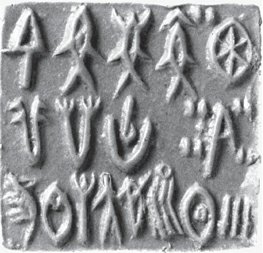
The squirrel sign signifies 'šē̃ṣṭrĭ̄ ʻflying squirrelʼ, rebus 'šē̃ṣṭrĭ̄ ʻguild master'; سیټه seṯṯh, s.m. (5th) A banker, a merchant. Pl. سیټڼان seṯṯhān (Pashto) PLUS खार [ khāra ] A squirrel, Sciurus palmarum. खारी [ khārī ] f (Usually खार ) A squirrel. (Marathi) rebus khār 'blacksmith (Kashmiri). Thus, the squirrel signifies a guild-master of a blacksmith-guild.
![]()
Ganweriwala tablet. Ganeriwala or Ganweriwala (Urdu: گنےریوالا Punjabi: گنیریوالا) is a Sarasvati-Sindhu civilization site in Cholistan, Punjab, Pakistan.
Glyphs on a broken molded tablet, Ganweriwala. The reverse includes the 'rim-of-jar' glyph in a 3-glyph text. Observe shows a person seated on a stool and a kneeling adorant below.
Hieroglyph: kamadha '
బత్తుడు battuḍu. n. A worshipper
Hypertexts: భక్తుడు. maṇḍi '
Ir. bärī roof. ĀlKu. bari thatched roof. Ko. varj- (varj-) to wrap, wind; vayr roof. To. pary roof of hut. Rebus: baḍhi 'worker in wood and iron' (Santali) bāṛaï 'carpenter' (Bengali) bari 'merchant' barea 'merchant' (Santali) vāḍhī, 'one who helps a merchant (Hemacandra Desinamamamala). bhaṭa '
Rebus: artificer: పాంచాలము pāñcālamu pānchālamu. [Skt.] n. The Punjab. The country north of Delhi, between the foot of the Himalayas and the Chambal. పంజాబుదేశము. పాంచాలి pānchāli. n. The daughter of the king of Pānchāla; a title of Draupadi, the wife of the five Pāndu princes. ద్రౌపది. పాంచాలిక pānchālika. n. A doll or puppet, an image carved on pillars, &c. బొమ్మ, నరమృగాదిరూపము. పాంచాలుడు pānchāluḍu. n. A member of any one of the five castes of artificers, viz., the carpenters, weavers, barbers, washermen, painters. వడ్లవాడు, సాలెవాడు, మంగలవాడు, చాకలవాడు, ముచ్చివాడు, ఈ అయిదు జాతులందు దేనిలోనైనను చేరినవాడు. వడ్రంగి, వడ్లంగి, వడ్లవాడు vaḍraṅgi, vaḍlaṅgi, vaḍlavāḍu or వడ్లబత్తుడు vaḍrangi. [Tel.] n. A carpenter. వడ్రంగము, వడ్లపని, వడ్రము or వడ్లంగితనము vaḍrangamu. n. The trade of a carpenter. వడ్లవానివృత్తి. వడ్రంగిపని. వడ్రంగిపిట్ట or వడ్లంగిపిట్ట vaḍrangi-piṭṭa. n. A woodpecker. దార్వాఘాటము. వడ్లకంకణము vaḍla-kankaṇamu. n. A curlew. ఉల్లంకులలో భేదము. వడ్లత or వడ్లది vaḍlata. n. A woman of the carpenter caste. A is a శిల్పి சிற்பன் ciṟpaṉ , n. < šilpa. Brahmā, as one skilled in the art of creation; [சிருட்டித் தொழி லில் வல்லவன்] பிரமன். சிற்பனையெலாஞ் சிருட்டித்த (திருமந். 628). சிற்பாசாரி ciṟpācāri , n. < id. + ஆசாரி. See சிற்பி. (யாழ். அக.)சிற்பி ciṟpi , n. < šilpin. Mechanic, artisan, stone-cutter; கம்மியன். (சூடா.) சிப்பி² cippi, n. prob. šilpin. 1. See சிற்பி. 2. Tailor; தையற்காரன். (சிலப். 5, 32, அடிக்குறிப்பு). శిల్పము śilpamu ṣilpamu. [Skt.] n. An art, any manual or mechanical art. చిత్తరువు వ్రాయడము మొదలైనపని. శిల్పి or శిల్పకారుడు ṣilpi. n. An artist, artisan, artificer, mechanic, handicraftsman. పనివాడు. A painter, ముచ్చి. A carpenter, వడ్లంగి. A weaver, సాలెవాడు. (Usually) a stonecutter, a sculptor, కాసెవాడు. శిల్పిశాస్త్రము ṣilpi-ṣāstramu. n. A mechanical science; the science of Architecture. చిత్రాదికర్మలను గురించిన విధానము.
1. kuṭila ‘bent’; rebus: kuṭila, katthīl = bronze (8 parts copper and 2 parts tin) [cf. āra-kūṭa, ‘brass’ (Skt.) (CDIAL 3230)
2. Glyph of ‘rim of jar’: kárṇaka m. ʻ projection on the side of a vessel, handle ʼ ŚBr. [kárṇa -- ]Pa. kaṇṇaka -- ʻ having ears or corners ʼ; (CDIAL 2831) kaṇḍa kanka; Rebus: furnace account (scribe). kaṇḍ = fire-altar (Santali); kan = copper (Tamil) khanaka m. one who digs , digger , excavator Rebus: karanikamu. Clerkship: the office of a Karanam or clerk. (Telugu) káraṇa n. ʻ act, deed ʼ RV. [√kr̥1] Pa. karaṇa -- n. ʻdoingʼ; NiDoc. karana, kaṁraṁna ʻworkʼ; Pk. karaṇa -- n. ʻinstrumentʼ(CDIAL 2790)
3. khareḍo = a currycomb (G.) Rebus: kharādī ‘ turner’ (Gujarati.) khareḍo 'a currycomb' rebus kharada खरडें daybook.
Hieroglyph: मेढा [mēḍhā] A twist or tangle arising in thread or cord, a curl or snarl (Marathi). Rebus: meḍ 'iron, copper' (Munda. Slavic) mẽṛhẽt, meD 'iron' (Mu.Ho.Santali)meď 'copper' (Slovak)
![]()
Excerpts from a recent report (Dr. Vasant Shinde and Dr. Rick Willis) on copper plates with Indus script inscriptions:"The copper plates described in this article are believed to date from the Mature Harappan period, 2600–1900 BC. They were given to the second author in 2011, who realized that the plates were unusual, as they were large and robust, and bore mirrored Indus script as found in seals, but the inscriptions were relatively finely incised and unlikely capable of leaving satisfactory impressions, as with a seal...The copper plates superficially resemble large Indus Valley seals, as seven of the plates bear an image of an animal or person, plus reversed text. Two of the copper plates bear only mirrored Indus characters boldly engraved in two rows. The plates are illustrated in Figure 2...- kamaḍha ‘penance’ Rebus: kammaṭa ‘mint, coiner’.
- koḍ = horns (Santali); koḍ ‘workshop’ (G.)
- Pair of fishes (hieroglyph on the chest of the seated person): dula 'pair' Rebus: dul 'cast metal' ayo 'fish' Rebus: ayas 'metal alloy'; aya'iron' (Gujarati). Thus dul aya 'cast metal alloy'.
Proto-Elamite seal impressions, Susa. Seated bulls in penance posture. (After Amiet 1980: nos. 581, 582).Hieroglyph: kamaDha 'penance' (Prakritam) Rebus: kammaTTa 'coiner, mint'Hieroglyph: dhanga 'mountain range' Rebus: dhangar 'blacksmith'
Hieroglyph: rango 'buffalo' Rebus: rango 'pewter'.
![]() m1186 seal. kaula— m. ‘worshipper of Śakti according to left—hand ritual’, khōla—3 ‘lame’; Khot. kūra— ‘crooked’ BSOS ix 72 and poss. Sk. kōra— m. ‘movable joint’ Suśr.] Ash. kṓlƏ ‘curved, crooked’; Dm. kōla ‘crooked’, Tir. kṓolƏ; Paš. kōlā́ ‘curved, crooked’, Shum. kolā́ṇṭa; Kho. koli ‘crooked’, (Lor.) also ‘lefthand, left’; Bshk. kōl ‘crooked’; Phal. kūulo; Sh. kōlu̯ ‘curved, crooked’ (CDIAL 3533). Rebus: kol ‘pancaloha’ (Tamil)
m1186 seal. kaula— m. ‘worshipper of Śakti according to left—hand ritual’, khōla—3 ‘lame’; Khot. kūra— ‘crooked’ BSOS ix 72 and poss. Sk. kōra— m. ‘movable joint’ Suśr.] Ash. kṓlƏ ‘curved, crooked’; Dm. kōla ‘crooked’, Tir. kṓolƏ; Paš. kōlā́ ‘curved, crooked’, Shum. kolā́ṇṭa; Kho. koli ‘crooked’, (Lor.) also ‘lefthand, left’; Bshk. kōl ‘crooked’; Phal. kūulo; Sh. kōlu̯ ‘curved, crooked’ (CDIAL 3533). Rebus: kol ‘pancaloha’ (Tamil)
bhaTa 'worshipper' Rebus: bhaTa 'furnace' baTa 'iron' (Gujarati)saman 'make an offering (Santali) samanon 'gold' (Santali)minDAl 'markhor' (Torwali) meDho 'ram' (Gujarati)(CDIAL 10120) Rebus: me~Rhet, meD 'iron' (Mu.Ho.Santali)heraka 'spy' (Samskritam) Rebus:eraka 'molten metal, copper'maNDa 'branch, twig' (Telugu) Rebus: maNDA 'warehouse, workshop' (Konkani)\karibha, jata kola Rebus: karba, ib, jasta, 'iron, zinc, metal (alloy of five metals)maNDi 'kneeling position' Rebus: mADa 'shrine; mandil 'temple' (Santali)
dhatu 'scarf' Rebus: dhatu 'mineral ore' (Santali)
The rice plant adorning the curved horn of the person (woman?) with the pig-tail is kolmo; read rebus, kolme ‘smithy’. Smithy of what? Kol ‘pancaloha’. The curving horn is: kod.u = horn; rebus: kod. artisan’s workshop (Kuwi)
The long curving horns may also connote a ram on h177B tablet:
![]() Mohenjo-daro. Square seal depicting a nude male deity with three faces, seated in yogic position on a throne, wearing bangles on both arms and an elaborate headdress. Five symbols of the Indus script appear on either side of the headdress which is made of two outward projecting buffalo style curved horns, with two upward projecting points. A single branch with three pipal leaves rises from the middle of the headdress.
Mohenjo-daro. Square seal depicting a nude male deity with three faces, seated in yogic position on a throne, wearing bangles on both arms and an elaborate headdress. Five symbols of the Indus script appear on either side of the headdress which is made of two outward projecting buffalo style curved horns, with two upward projecting points. A single branch with three pipal leaves rises from the middle of the headdress.
Seven bangles are depicted on the left arm and six on the right, with the hands resting on the knees. The heels are pressed together under the groin and the feet project beyond the edge of the throne. The feet of the throne are carved with the hoof of a bovine as is seen on the bull and unicorn seals. The seal may not have been fired, but the stone is very hard. A grooved and perforated boss is present on the back of the seal.
Material: tan steatite Dimensions: 2.65 x 2.7 cm, 0.83 to 0.86 thickness Mohenjo-daro, DK 12050
Islamabad Museum, NMP 50.296 Mackay 1938: 335, pl. LXXXVII, 222 Hieroglyph: kamaḍha ‘penance’ (Pkt.) Rebus 1: kampaṭṭa ‘mint’ (Ma.) kamaṭa = portable furnace for melting precious metals (Te.);Rebus 2: kaṇḍa ‘fire-altar' (Santali); kan ‘copper’ (Ta.)
Hieroglyph: karã̄ n. pl. ʻwristlets, bangles ʼ (Gujarati); kara 'hand' (Rigveda) Rebus: khAr 'blacksmith' (Kashmiri) The bunch of twigs = ku_di_, ku_t.i_ (Skt.lex.) ku_di_ (also written as ku_t.i_ in manuscripts) occurs in the Atharvaveda (AV 5.19.12) and Kaus’ika Su_tra (Bloomsfield’s ed.n, xliv. cf. Bloomsfield, American Journal of Philology, 11, 355; 12,416; Roth, Festgruss an Bohtlingk,98) denotes it as a twig. This is identified as that of Badari_, the jujube tied to the body of the dead to efface their traces. (See Vedic Index, I, p. 177).[Note the twig adoring the head-dress of a horned, standing person]![]() Haystack, heap of straw: Ta. kuntam haystack. Ka. kuttaṟi a stack, rick.(DEDR 1724)kuṇḍa
Haystack, heap of straw: Ta. kuntam haystack. Ka. kuttaṟi a stack, rick.(DEDR 1724)kuṇḍa3 n. ʻ clump ʼ e.g. darbha -- kuṇḍa -- Pāṇ. [← Drav. (Tam. koṇṭai ʻ tuft of hair ʼ, Kan. goṇḍe ʻ cluster ʼ, &c.) T. Burrow BSOAS xii 374]Pk. kuṁḍa -- n. ʻ heap of crushed sugarcane stalks ʼ; WPah. bhal. kunnū m. ʻ large heap of a mown crop ʼ; N. kunyũ ʻ large heap of grain or straw ʼ, baṛ -- kũṛo ʻ cluster of berries ʼ.(CDIAL 3266) *kuṇḍaka ʻ husks, bran ʼ.Pa. kuṇḍaka -- m. ʻ red powder of rice husks ʼ; Pk. kuṁḍaga -- m. ʻ chaff ʼ; N. kũṛo ʻ boiled grain given as fodder to buffaloes ʼ, kunāuro ʻ husk of lentils ʼ (for ending cf. kusāuro ʻ chaff of mustard ʼ); B. kũṛā ʻ rice dust ʼ; Or. kuṇḍā ʻ rice bran ʼ; M. kũḍā, kõ˚ m. ʻ bran ʼ; Si. kuḍu ʻ powder of paddy &c. ʼAddenda: kuṇḍaka -- in cmpd. kaṇa -- kuṇḍaka -- Arthaś.(CDIAL 3267)कोंडा kōṇḍā m Bran, husk of corn gen. 2 fig. Miliary scab, scurf. 3 fig. Rash, any efflorescence on the body. 4 A small kind of bamboo. 5 Commonly कोंयंडा. कोंड्याचा मांडा करणें To make, by culinary skill, a savory dish out of coarse materials. कोंडेकड kōṇḍēkaḍa n A cake composed of rice-bran well peppered and salted.(Marathi)
Ta. kuntam haystack. Ka. kuttaṟi a stack, rick. (DEDR 1724)
Ka. kunda a pillar of bricks, etc. Tu. kunda pillar, post. Te. kunda id. Malt. kunda block, log. ? Cf. Ta. kantu pillar, post.(DEDR 1723)
Ta. kuntu (kunti-) to sit on the heels with legs folded upright, squat; n. sitting on the heels, squatting. Ma. kuttuka to squat, sit on one's heels. Ka.kuntu, kūtu having sat down. Tu. (B-K.) kutoṇu to sit. Te. gontu-gūrcuṇḍu to squat, sit with the soles of the feet fully on the ground and the buttocks touching it or close to it; kudikilu, kudikilãbaḍu to squat down; kundikāḷḷu, kundikundikāḷḷu a boys' game like leapfrog; kundē̆lu hare. Go. (Ko.) kud- to sit (Voc. 748); caus. (KoyaT.) kup-, (KoyaSu.) kuppis-; (many dialects) kuttul a stool to sit on (Voc. 745).(DEDR 1728)
कुन्द a turner's lathe; Ta. kuntaṉam interspace for setting gems in a jewel; fine gold (< Te.). Ka. kundaṇa setting a precious stone in fine gold; fine gold; kundana fine gold. Tu. kundaṇa pure gold. Te. kundanamu fine gold used in very thin foils in setting precious stones; setting precious stones with fine gold. (DEDR 1725)
कुन्द one of कुबेर's nine treasures (N. of a गुह्यक Demetrius Galanos's Lexiko: sanskritikes, anglikes, hellenikes) Young bull kār-kunda 'manager' with unique orthographic ligatures elucidates metallurgical competence of 'lapidary, goldsmith, turner' in mint
Semantics of kār- in kār-kunda
khār 1 खार् । लोहकारः m. (sg. abl. khāra 1 खार ; the pl. dat. of this word is khāran 1 खारन् , which is to be distinguished from khāran 2, q.v., s.v.), a blacksmith, an iron worker (cf. bandūka-khār, p. 111b, l. 46; K.Pr. 46; H. xi, 17); a farrier (El.). This word is often a part of a name, and in such case comes at the end (W. 118) as in Wahab khār, Wahab the smith (H. ii, 12; vi, 17). khāra-basta खार-बस्त । चर्मप्रसेविका f. the skin bellows of a blacksmith. -büṭhü-ब॑ठू॒ । लोहकारभित्तिः f. the wall of a blacksmith's furnace or hearth. -bāy -बाय् । लोहकारपत्नी f. a blacksmith's wife (Gr.Gr. 34). -dŏkuru -द्वकुरु॒ । लोहकारायोघनः m. a blacksmith's hammer, a sledge-hammer. -gȧji -ग॑जि॒ or -güjü -ग॑जू॒ । लोहकारचुल्लिः f. a blacksmith's furnace or hearth. -hāl -हाल् । लोहकारकन्दुः f. (sg. dat. -höjü -हा॑जू॒ ), a blacksmith's smelting furnace; cf. hāl 5. -kūrü -कूरू॒ । लोहकारकन्या f. a blacksmith's daughter. -koṭu -क॑टु॒ । लोहकारपुत्रः m. the son of a blacksmith, esp. a skilful son, who can work at the same profession. -küṭü -क॑टू॒ । लोहकारकन्या f. a blacksmith's daughter, esp. one who has the virtues and qualities properly belonging to her father's profession or caste. -më̆ʦü 1 -म्य॑च़ू॒ । लोहकारमृत्तिका f. (for 2, see khāra 3), 'blacksmith's earth,' i.e. iron-ore. -nĕcyuwu -न्यचिवु॒ । लोहकारात्मजः m. a blacksmith's son. -nay -नय् । लोहकारनालिका f. (for khāranay 2, see khārun), the trough into which the blacksmith allows melted iron to flow after smelting. -ʦañĕ -च़्ञ । लोहकारशान्ताङ्गाराः f.pl. charcoal used by blacksmiths in their furnaces. -wān वान् । लोहकारापणः m. a blacksmith's shop, a forge, smithy (K.Pr. 30). -waṭh -वठ् । आघाताधारशिला m. (sg. dat. -waṭas -वटि ), the large stone used by a blacksmith as an anvil.(Kashmiri)
Mohenjo-daro. Sealing. Surrounded by fishes, lizard and snakes, a horned person sits in 'yoga' on a throne with hoofed legs. One side of a triangular terracotta amulet (Md 013); surface find at Mohenjo-daro in 1936, Dept. of Eastern Art, Ashmolean Museum, Oxford. [seated person penance, crocodile?] Brief memoranda: kamaḍha ‘penance’ Rebus: kammaṭa ‘mint, coiner’; kaṇḍo ‘stool, seat’ Rebus: kāṇḍa ‘metalware’ kaṇḍa ‘fire-altar’.kAru 'crocodile' Rebus: kAru 'artisan'.
Glyph: meD 'to dance' (F.)[reduplicated from me-]; me id. (M.) in Remo (Munda)(Source: D. Stampe's Munda etyma) meṭṭu to tread, trample, crush under foot, tread or place the foot upon (Te.); meṭṭu step (Ga.); mettunga steps (Ga.). maḍye to trample, tread (Malt.)(DEDR 5057) మెట్టు (p. 1027) [ meṭṭu ] meṭṭu. [Tel.] v. a. &n. To step, walk, tread. అడుగుపెట్టు, నడుచు, త్రొక్కు . "మెల్ల మెల్లన మెట్టుచుదొలగి అల్లనల్లనతలుపులండకు జేరి ." BD iv. 1523. To tread on, to trample on. To kick, to thrust with the foot.మెట్టిక meṭṭika. n. A step , మెట్టు, సోపానము (Telugu) Rebus: meD 'iron' (Mundari. Remo.) Glyph: bhaṭa ‘six’ (G.) rebus: baṭa = kiln (Santali) baṭa = a kind of iron (Gujarati) [Note: six legs shown on the lizard glyph]![]() h-155. Crab with six legs
h-155. Crab with six legs![]() Seal M-1104 Six legs ligatured to a pincer.The rebus readings are: aḍi 'anvil' airaṇ 'anvil' (for use in) baṭa 'iron working' or kiln/furnace-work.Horned deity seals, Mohenjo-daro: a. horned deity with pipal-leaf headdress, Mohenjo-daro (DK12050, NMP 50.296) (Courtesy of the Department of Archaeology and Museums, Government of Pakistan); b. horned deity with star motifs, Mohenjo-daro (M-305) (PARPOLA 1994:Fig. 10.9); courtesy of the Archaeological Survey of India; c. horned deity surrounded by animals, Mohenjo-daro (JOSHI – PARPOLA 1987:M-304); courtesy of the Archaeological Survey of India.
Seal M-1104 Six legs ligatured to a pincer.The rebus readings are: aḍi 'anvil' airaṇ 'anvil' (for use in) baṭa 'iron working' or kiln/furnace-work.Horned deity seals, Mohenjo-daro: a. horned deity with pipal-leaf headdress, Mohenjo-daro (DK12050, NMP 50.296) (Courtesy of the Department of Archaeology and Museums, Government of Pakistan); b. horned deity with star motifs, Mohenjo-daro (M-305) (PARPOLA 1994:Fig. 10.9); courtesy of the Archaeological Survey of India; c. horned deity surrounded by animals, Mohenjo-daro (JOSHI – PARPOLA 1987:M-304); courtesy of the Archaeological Survey of India.
ṭhaṭera 'buffalo horns'. Rebus: ṭhaṭerā 'brass worker'meḍha 'polar star' (Marathi). Rebus: meḍ 'iron' (Ho.Mu.)
kamadha '
m453B. Scarf as pigtail of seated person.Kneeling adorant and serpent on the field.
khaṇḍiyo [cf. khaṇḍaṇī a tribute] tributary; paying a tribute to a superior king (Gujarti) Rebus: khaṇḍaran, khaṇḍrun ‘pit furnace’ (Santali)
paṭa. 'serpent hood' Rebus: pata ‘sharpness (of knife), tempered (metal). padm ‘tempered iron’ (Kota) Hieroglyph: फडा (p. 313) phaḍā f (फटा S) The hood of Coluber Nága &c. Ta. patam cobra's hood. Ma. paṭam id. Ka. peḍe id. Te. paḍaga id. Go. (S.) paṛge, (Mu.) baṛak, (Ma.) baṛki, (F-H.) biṛki hood of serpent (Voc. 2154). / Turner, CDIAL, no. 9040, Skt. (s)phaṭa-, sphaṭā- a serpent's expanded hood, Pkt. phaḍā- id. For IE etymology, see Burrow, The Problem of Shwa in Sanskrit, p. 45.(DEDR 47) Rebus: phaḍa फड ‘manufactory, company, guild, public office’, keeper of all accounts, registers.फडपूस (p. 313) phaḍapūsa f (फड & पुसणें) Public or open inquiry. फडफरमाश or स (p. 313) phaḍapharamāśa or sa f ( H & P) Fruit, vegetables &c. furnished on occasions to Rajas and public officers, on the authority of their order upon the villages; any petty article or trifling work exacted from the Ryots by Government or a public officer.
bhráṣṭra n. ʻ frying pan, gridiron ʼ MaitrS. [√bhrajj] Pk. bhaṭṭha -- m.n. ʻ gridiron ʼ; K. büṭhü f. ʻ level surface by kitchen fireplace on which vessels are put when taken off fire ʼ; S. baṭhu m. ʻ large pot in which grain is parched, large cooking fire ʼ, baṭhī f. ʻ distilling furnace ʼ; L. bhaṭṭh m. ʻ grain -- parcher's oven ʼ, bhaṭṭhī f. ʻ kiln, distillery ʼ, awāṇ. bhaṭh; P. bhaṭṭh m., °ṭhī f. ʻ furnace ʼ, bhaṭṭhā m. ʻ kiln ʼ; N. bhāṭi ʻ oven or vessel in which clothes are steamed for washing ʼ; A. bhaṭā ʻ brick -- or lime -- kiln ʼ; B. bhāṭi ʻ kiln ʼ; Or. bhāṭi ʻ brick -- kiln, distilling pot ʼ; Mth. bhaṭhī, bhaṭṭī ʻ brick -- kiln, furnace, still ʼ; Aw.lakh. bhāṭhā ʻ kiln ʼ; H. bhaṭṭhā m. ʻ kiln ʼ, bhaṭ f. ʻ kiln, oven, fireplace ʼ; M. bhaṭṭā m. ʻ pot of fire ʼ, bhaṭṭī f. ʻ forge ʼ. -- X bhástrā -- q.v. S.kcch. bhaṭṭhī keṇī ʻ distil (spirits) ʼ.(CDIAL 9656). kolmo ‘three’ (Mu.); rebus: kolami ‘smithy’ (Telugu) కొలిమి [ kolimi ] kolimi. [Tel.] n. A pit. A fire pit or furnace. ముద్దకొలిమి a smelting forge. నీళ్లకొలిమి a reservoir. కొలిమిత్తిత్తి a pair of bellows.(Telugu) పట్టడ [ paṭṭaḍa ] paṭṭaḍu. [Tel.] n. A smithy, a shop. కుమ్మరి వడ్లంగి మొదలగువారు పనిచేయు చోటు.(Telugu) Glyph: S. baṭhu m. ‘large pot in which grain is parched; L. bhaṭṭh m. ʻ grain -- parcher's oven ʼM. bhaṭṭā m. ʻ pot of fire ʼ(CDIAL 9656). Glyph: bhaṭa ‘six’ (G.) rebus: baṭa = kiln (Santali); bhaṭṭī f. ʻ forge ʼ(Marathi)(CDIAL 9656). baṭa = a kind of iron (G.) bhaṭṭhī f. ‘kiln, distillery’, awāṇ. bhaṭh; P. bhaṭṭh m., °ṭhī f. ‘furnace’, bhaṭṭhā m. ‘kiln’; S. bhaṭṭhī keṇī ‘distil (spirits) baṭa = furnace (Santali) bhrāṣṭra = furnace (Skt.) bhaṭa ‘furnace’ (G.) baṭhī f. ʻ distilling furnace' (Sindhi).
Seated person in penance. Wears a scarf as pigtail and curved horns with embedded stars and a twig.
mēḍha The polar star. (Marathi) Rebus: meḍ ‘iron’ (Ho.) dula ‘pair’ (Kashmiri); Rebus: dul ‘cast (metal)’(Santali) ḍabe, ḍabea ‘large horns, with a sweeping upward curve, applied to buffaloes’ (Santali) Rebus: ḍab, ḍhimba, ḍhompo ‘lump (ingot?)’, clot, make a lump or clot, coagulate, fuse, melt together (Santali) kūtī = bunch of twigs (Skt.) Rebus: kuṭhi = (smelter) furnace (Santali) The narrative on this metalware catalog is thus: (smelter) furnace for iron and for fusing together cast metal. kamaḍha ‘penance’.Rebus 1: kaṇḍ ‘stone (ore) metal’.Rebus 2: kampaṭṭa‘mint’.
![]() Rebus:Ta. maṉṟu hall of assembly, golden hall of Chidambaram, court of justice, arbitration court, cow-stall, herd of cows, raised platform under a tree for village meetings, centre of a garden, junction of four roads or streets; maṉṟam hall, assembly, court, meeting place under a tree in a village, open space used for riding horses, plain, open space, central place in a battlefield, Chidambaram, house, cowshed, long street; maṉṟalmarriage, long street; maṉṟaṉ Śiva; maṉṟ-il courtyard of a house; maṉṟu (maṉṟi-) to fine, punish. Ma.mannu place of judgement or assembly; mannam standing place, place of judgment or discussion. Ko. manḏToda mund (i.e. village); burning place for dry funeral; mandm (obl. mandt-) meeting. To. moḏ (obl. moṟt-)locus of tribal activity, including village with dairy, dairy apart from village, and funeral place; patrilineal clan. Ka. mandu hamlet of the Todas on the Nilagiri. Koḍ. mandï village green.(DEDR 4777)मन्दिरम् mandiram मन्दिरम् [मन्द्यते$त्र मन्द् किरच्] A dwelling house, habitation, place, mansion; प्रावेशयन्मन्दिरमृद्धमेनम् Ku.7. 55; Bk.8.96; R.12.83; मणिमयमन्दिरमध्ये पश्यति पिपीलिका छिद्रम् Subhāṣ. -2 An abode, a dwelling in general; as in क्षीराब्धिमन्दिरः. -3 A town; विनिक्षिप्य बलं सर्वं बहिरन्तश्च मन्दिरे Rām.6.12.3. -4 A camp. -5 A temple. -6 The body.
Rebus:Ta. maṉṟu hall of assembly, golden hall of Chidambaram, court of justice, arbitration court, cow-stall, herd of cows, raised platform under a tree for village meetings, centre of a garden, junction of four roads or streets; maṉṟam hall, assembly, court, meeting place under a tree in a village, open space used for riding horses, plain, open space, central place in a battlefield, Chidambaram, house, cowshed, long street; maṉṟalmarriage, long street; maṉṟaṉ Śiva; maṉṟ-il courtyard of a house; maṉṟu (maṉṟi-) to fine, punish. Ma.mannu place of judgement or assembly; mannam standing place, place of judgment or discussion. Ko. manḏToda mund (i.e. village); burning place for dry funeral; mandm (obl. mandt-) meeting. To. moḏ (obl. moṟt-)locus of tribal activity, including village with dairy, dairy apart from village, and funeral place; patrilineal clan. Ka. mandu hamlet of the Todas on the Nilagiri. Koḍ. mandï village green.(DEDR 4777)मन्दिरम् mandiram मन्दिरम् [मन्द्यते$त्र मन्द् किरच्] A dwelling house, habitation, place, mansion; प्रावेशयन्मन्दिरमृद्धमेनम् Ku.7. 55; Bk.8.96; R.12.83; मणिमयमन्दिरमध्ये पश्यति पिपीलिका छिद्रम् Subhāṣ. -2 An abode, a dwelling in general; as in क्षीराब्धिमन्दिरः. -3 A town; विनिक्षिप्य बलं सर्वं बहिरन्तश्च मन्दिरे Rām.6.12.3. -4 A camp. -5 A temple. -6 The body.
मन्दिरा mandirā मन्दिरा A stable.मन्दुरा mandurā मन्दुरा [मन्द् उरच् Uṇ.1.38] 1 A stable for horses, a stable in general; प्रभ्रष्टो$यं प्लवङ्गः प्रविशति नृपतेर्मन्दिरं मन्दुरायाः Ratn.2.2; R.16.41; क्षुराञ्चलैः क्षोभितमन्दुरोदरम् N.; मन्दुरायां निरुद्धो$पि विद्रुतो$भूद्धरिर्हरेः Śiva B.21.74. -Comp. -पतिः, -पालः the mana- ger of a stable; a groom; शुश्राव ...... । असौ परस्परालापं मन्दुरायामपालयोः Dharmābhyudayamahākāvya 2.42.
मन्थर manthara मन्थर An antelope. मन्ध m. a kind of antelope Shad2vBr. (Sch. मन्थ).(Monier-Williams)
मन्थर manthara मन्थर A spy, an informer.மந்தரன்1 mantaraṉ , n. perh. mantra. Spy; ஒற்றன். (யாழ். அக.)
मन्थर manthara मन्थर -रः 1 A store, treasure; A stronghold.(Apte) मन्थर m. a treasure or hair or anger (= कोश , केश , or कोप) (Monier-Williams) ![]()
அனுமந்தரம் aṉu-mantaram , n. < anu +. (Mus.) Subsidiary mantaram string, in a lute; மந்தரத்தந்திக்குத் துணையாயுள்ள நரம்பு. (சங். சந்.) மந்தரம்2 mantaram , n. < mandra. 1. (Mus.) The base or lowest pitch; படுத்தலோசை. மந்தர மத்திமை தாரமிவை (கல்லா . 21, 50). 2. (Mus.) The seventh note of the gamut, represented by `ni'; 'நி'என்னும் ஏழாம் சுவரம் . (W .) मन्दर m. N. of a sacred mountain (the residence of various deities ; it served the gods and असुरs for a churning-stick at the churning of the ocean for the recovery of the अमृत and thirteen other precious things lost during the deluge) MBh. Ka1v. &c; m. heaven (= स्वर्ग ; cf. मेरु); a mirror; m. a pearl chain consisting of 8 or 16 strings (Monier-Williams)
मन्द्र a kind of drum (Monier-Williams) मन्द्र mandra मन्द्र a. [मन्द् रक् Uṇ.2.13] Low, deep, grave hollow, rumbling (as sound); पयोदमन्द्रध्वनिना धरित्री Ki.16.3;7.22; Me.11; R.6.56. -2 Ved. Delightful, pleasing, pleasant; एवं ब्रुवाणे वैकुण्ठे भृगुस्तन्मन्द्रया गिरा Bhāg.1.89.13. -3 Praiseworthy. -न्द्रः 1 A deep sound, low tone. -2 A kind of drum (Apte)

Ganweriwala tablet. Ganeriwala or Ganweriwala (Urdu: گنےریوالا Punjabi: گنیریوالا) is a Sarasvati-Sindhu civilization site in Cholistan, Punjab, Pakistan.
Glyphs on a broken molded tablet, Ganweriwala. The reverse includes the 'rim-of-jar' glyph in a 3-glyph text. Observe shows a person seated on a stool and a kneeling adorant below.
Hieroglyph: kamadha '
బత్తుడు battuḍu. n. A worshipper
Hypertexts: భక్తుడు. maṇḍi '
Ir. bärī roof. ĀlKu. bari thatched roof. Ko. varj- (varj-) to wrap, wind; vayr roof. To. pary roof of hut. Rebus: baḍhi 'worker in wood and iron' (Santali) bāṛaï 'carpenter' (Bengali) bari 'merchant' barea 'merchant' (Santali) vāḍhī, 'one who helps a merchant (Hemacandra Desinamamamala). bhaṭa '
Excerpts from a recent report (Dr. Vasant Shinde and Dr. Rick Willis) on copper plates with Indus script inscriptions:"The copper plates described in this article are believed to date from the Mature Harappan period, 2600–1900 BC. They were given to the second author in 2011, who realized that the plates were unusual, as they were large and robust, and bore mirrored Indus script as found in seals, but the inscriptions were relatively finely incised and unlikely capable of leaving satisfactory impressions, as with a seal...The copper plates superficially resemble large Indus Valley seals, as seven of the plates bear an image of an animal or person, plus reversed text. Two of the copper plates bear only mirrored Indus characters boldly engraved in two rows. The plates are illustrated in Figure 2...
- kamaḍha ‘penance’ Rebus: kammaṭa ‘mint, coiner’.
- koḍ = horns (Santali); koḍ ‘workshop’ (G.)
- Pair of fishes (hieroglyph on the chest of the seated person): dula 'pair' Rebus: dul 'cast metal' ayo 'fish' Rebus: ayas 'metal alloy'; aya'iron' (Gujarati). Thus dul aya 'cast metal alloy'.
Hieroglyph: rango 'buffalo' Rebus: rango 'pewter'.

m1186 seal. kaula— m. ‘worshipper of Śakti according to left—hand ritual’, khōla—3 ‘lame’; Khot. kūra— ‘crooked’ BSOS ix 72 and poss. Sk. kōra— m. ‘movable joint’ Suśr.] Ash. kṓlƏ ‘curved, crooked’; Dm. kōla ‘crooked’, Tir. kṓolƏ; Paš. kōlā́ ‘curved, crooked’, Shum. kolā́ṇṭa; Kho. koli ‘crooked’, (Lor.) also ‘lefthand, left’; Bshk. kōl ‘crooked’; Phal. kūulo; Sh. kōlu̯ ‘curved, crooked’ (CDIAL 3533).
Rebus: kol ‘pancaloha’ (Tamil)
bhaTa 'worshipper' Rebus: bhaTa 'furnace' baTa 'iron' (Gujarati)
saman 'make an offering (Santali) samanon 'gold' (Santali)
minDAl 'markhor' (Torwali) meDho 'ram' (Gujarati)(CDIAL 10120) Rebus: me~Rhet, meD 'iron' (Mu.Ho.Santali)
heraka 'spy' (Samskritam) Rebus:eraka 'molten metal, copper'
maNDa 'branch, twig' (Telugu) Rebus: maNDA 'warehouse, workshop' (Konkani)\karibha, jata kola Rebus: karba, ib, jasta, 'iron, zinc, metal (alloy of five metals)
maNDi 'kneeling position' Rebus: mADa 'shrine; mandil 'temple' (Santali)
dhatu 'scarf' Rebus: dhatu 'mineral ore' (Santali)
The rice plant adorning the curved horn of the person (woman?) with the pig-tail is kolmo; read rebus, kolme ‘smithy’. Smithy of what? Kol ‘pancaloha’. The curving horn is: kod.u = horn; rebus: kod. artisan’s workshop (Kuwi)
The long curving horns may also connote a ram on h177B tablet:
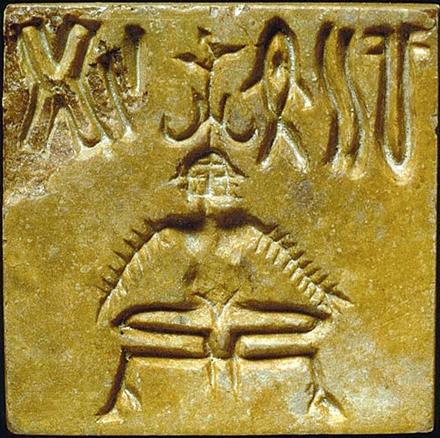
Mohenjo-daro. Square seal depicting a nude male deity with three faces, seated in yogic position on a throne, wearing bangles on both arms and an elaborate headdress. Five symbols of the Indus script appear on either side of the headdress which is made of two outward projecting buffalo style curved horns, with two upward projecting points. A single branch with three pipal leaves rises from the middle of the headdress.
Seven bangles are depicted on the left arm and six on the right, with the hands resting on the knees. The heels are pressed together under the groin and the feet project beyond the edge of the throne. The feet of the throne are carved with the hoof of a bovine as is seen on the bull and unicorn seals. The seal may not have been fired, but the stone is very hard. A grooved and perforated boss is present on the back of the seal.
Material: tan steatite Dimensions: 2.65 x 2.7 cm, 0.83 to 0.86 thickness Mohenjo-daro, DK 12050
Islamabad Museum, NMP 50.296 Mackay 1938: 335, pl. LXXXVII, 222
Hieroglyph: kamaḍha ‘penance’ (Pkt.) Rebus 1: kampaṭṭa ‘mint’ (Ma.) kamaṭa = portable furnace for melting precious metals (Te.);Rebus 2: kaṇḍa ‘fire-altar' (Santali); kan ‘copper’ (Ta.)
Hieroglyph: karã̄ n. pl. ʻwristlets, bangles ʼ (Gujarati); kara 'hand' (Rigveda) Rebus: khAr 'blacksmith' (Kashmiri)
The bunch of twigs = ku_di_, ku_t.i_ (Skt.lex.) ku_di_ (also written as ku_t.i_ in manuscripts) occurs in the Atharvaveda (AV 5.19.12) and Kaus’ika Su_tra (Bloomsfield’s ed.n, xliv. cf. Bloomsfield, American Journal of Philology, 11, 355; 12,416; Roth, Festgruss an Bohtlingk,98) denotes it as a twig. This is identified as that of Badari_, the jujube tied to the body of the dead to efface their traces. (See Vedic Index, I, p. 177).[Note the twig adoring the head-dress of a horned, standing person]
Haystack, heap of straw: Ta. kuntam haystack. Ka. kuttaṟi a stack, rick.(DEDR 1724)kuṇḍa3 n. ʻ clump ʼ e.g. darbha -- kuṇḍa -- Pāṇ. [← Drav. (Tam. koṇṭai ʻ tuft of hair ʼ, Kan. goṇḍe ʻ cluster ʼ, &c.) T. Burrow BSOAS xii 374]Pk. kuṁḍa -- n. ʻ heap of crushed sugarcane stalks ʼ; WPah. bhal. kunnū m. ʻ large heap of a mown crop ʼ; N. kunyũ ʻ large heap of grain or straw ʼ, baṛ -- kũṛo ʻ cluster of berries ʼ.(CDIAL 3266) *kuṇḍaka ʻ husks, bran ʼ.Pa. kuṇḍaka -- m. ʻ red powder of rice husks ʼ; Pk. kuṁḍaga -- m. ʻ chaff ʼ; N. kũṛo ʻ boiled grain given as fodder to buffaloes ʼ, kunāuro ʻ husk of lentils ʼ (for ending cf. kusāuro ʻ chaff of mustard ʼ); B. kũṛā ʻ rice dust ʼ; Or. kuṇḍā ʻ rice bran ʼ; M. kũḍā, kõ˚ m. ʻ bran ʼ; Si. kuḍu ʻ powder of paddy &c. ʼAddenda: kuṇḍaka -- in cmpd. kaṇa -- kuṇḍaka -- Arthaś.(CDIAL 3267)कोंडा kōṇḍā m Bran, husk of corn gen. 2 fig. Miliary scab, scurf. 3 fig. Rash, any efflorescence on the body. 4 A small kind of bamboo. 5 Commonly कोंयंडा. कोंड्याचा मांडा करणें To make, by culinary skill, a savory dish out of coarse materials. कोंडेकड kōṇḍēkaḍa n A cake composed of rice-bran well peppered and salted.(Marathi)
Ta. kuntam haystack. Ka. kuttaṟi a stack, rick. (DEDR 1724)
Ka. kunda a pillar of bricks, etc. Tu. kunda pillar, post. Te. kunda id. Malt. kunda block, log. ? Cf. Ta. kantu pillar, post.(DEDR 1723)
Ta. kuntu (kunti-) to sit on the heels with legs folded upright, squat; n. sitting on the heels, squatting. Ma. kuttuka to squat, sit on one's heels. Ka.kuntu, kūtu having sat down. Tu. (B-K.) kutoṇu to sit. Te. gontu-gūrcuṇḍu to squat, sit with the soles of the feet fully on the ground and the buttocks touching it or close to it; kudikilu, kudikilãbaḍu to squat down; kundikāḷḷu, kundikundikāḷḷu a boys' game like leapfrog; kundē̆lu hare. Go. (Ko.) kud- to sit (Voc. 748); caus. (KoyaT.) kup-, (KoyaSu.) kuppis-; (many dialects) kuttul a stool to sit on (Voc. 745).(DEDR 1728)
Glyph: meD 'to dance' (F.)[reduplicated from me-]; me id. (M.) in Remo (Munda)(Source: D. Stampe's Munda etyma) meṭṭu to tread, trample, crush under foot, tread or place the foot upon (Te.); meṭṭu step (Ga.); mettunga steps (Ga.). maḍye to trample, tread (Malt.)(DEDR 5057) మెట్టు (p. 1027) [ meṭṭu ] meṭṭu. [Tel.] v. a. &n. To step, walk, tread. అడుగుపెట్టు, నడుచు, త్రొక్కు . "మెల్ల మెల్లన మెట్టుచుదొలగి అల్లనల్లనతలుపులండకు జేరి ." BD iv. 1523. To tread on, to trample on. To kick, to thrust with the foot.మెట్టిక meṭṭika. n. A step , మెట్టు, సోపానము (Telugu)
Glyph: bhaṭa ‘six’ (G.) rebus: baṭa = kiln (Santali) baṭa = a kind of iron (Gujarati) [Note: six legs shown on the lizard glyph]![]() h-155. Crab with six legs
h-155. Crab with six legs![]() Seal M-1104 Six legs ligatured to a pincer.The rebus readings are: aḍi 'anvil' airaṇ 'anvil' (for use in) baṭa 'iron working' or kiln/furnace-work.
Seal M-1104 Six legs ligatured to a pincer.The rebus readings are: aḍi 'anvil' airaṇ 'anvil' (for use in) baṭa 'iron working' or kiln/furnace-work.
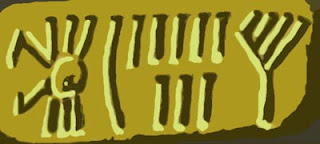 h-155. Crab with six legs
h-155. Crab with six legs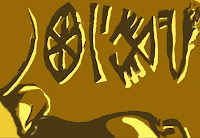 Seal M-1104 Six legs ligatured to a pincer.
Seal M-1104 Six legs ligatured to a pincer.Horned deity seals, Mohenjo-daro: a. horned deity with pipal-leaf headdress, Mohenjo-daro (DK12050, NMP 50.296) (Courtesy of the Department of Archaeology and Museums, Government of Pakistan); b. horned deity with star motifs, Mohenjo-daro (M-305) (PARPOLA 1994:Fig. 10.9); courtesy of the Archaeological Survey of India; c. horned deity surrounded by animals, Mohenjo-daro (JOSHI – PARPOLA 1987:M-304); courtesy of the Archaeological Survey of India.
ṭhaṭera 'buffalo horns'. Rebus: ṭhaṭerā 'brass worker'
meḍha 'polar star' (Marathi). Rebus: meḍ 'iron' (Ho.Mu.)
kamadha '
karã̄ n. pl. wristlets, banglesRebus: khAr 'blacksmith, iron worker'
rango 'buffalo' Rebus:rango 'pewter'
kari 'elephant' ibha 'elephant' Rebus: karba 'iron' ib 'iron'
kola 'tiger' Rebus: kol 'working in iron'
gaNDA 'rhinoceros' Rebus: kaNDa 'im;lements'
mlekh 'antelope, goat' Rebus: milakkha 'copper'
meD 'body' Rebus: meD 'iron''copper'
dhatu 'scarf' Rebus: dhatu 'mineral
m453B. Scarf as pigtail of seated person.Kneeling adorant and serpent on the field.
khaṇḍiyo [cf. khaṇḍaṇī a tribute] tributary; paying a tribute to a superior king (Gujarti) Rebus: khaṇḍaran, khaṇḍrun ‘pit furnace’ (Santali)
paṭa. 'serpent hood' Rebus: pata ‘sharpness (of knife), tempered (metal). padm ‘tempered iron’ (Kota) Hieroglyph: फडा (p. 313) phaḍā f (फटा S) The hood of Coluber Nága &c. Ta. patam cobra's hood. Ma. paṭam id. Ka. peḍe id. Te. paḍaga id. Go. (S.) paṛge, (Mu.) baṛak, (Ma.) baṛki, (F-H.) biṛki hood of serpent (Voc. 2154). / Turner, CDIAL, no. 9040, Skt. (s)phaṭa-, sphaṭā- a serpent's expanded hood, Pkt. phaḍā- id. For IE etymology, see Burrow, The Problem of Shwa in Sanskrit, p. 45.(DEDR 47) Rebus: phaḍa फड ‘manufactory, company, guild, public office’, keeper of all accounts, registers.
फडपूस (p. 313) phaḍapūsa f (फड & पुसणें) Public or open inquiry. फडफरमाश or स (p. 313) phaḍapharamāśa or sa f ( H & P) Fruit, vegetables &c. furnished on occasions to Rajas and public officers, on the authority of their order upon the villages; any petty article or trifling work exacted from the Ryots by Government or a public officer.
फडनिविशी or सी (p. 313) phaḍaniviśī or sī & फडनिवीस Commonly फड- निशी & फडनीस. फडनीस (p. 313) phaḍanīsa m ( H) A public officer,--the keeper of the registers &c. By him were issued all grants, commissions, and orders; and to him were rendered all accounts from the other departments. He answers to Deputy auditor and accountant. Formerly the head Kárkún of a district-cutcherry who had charge of the accounts &c. was called फडनीस.
फडकरी (p. 313) phaḍakarī m A man belonging to a company or band (of players, showmen &c.) 2 A superintendent or master of a फड or public place. See under फड. 3 A retail-dealer (esp. in grain).
फडझडती (p. 313) phaḍajhaḍatī f sometimes फडझाडणी f A clearing off of public business (of any business comprehended under the word फड q. v.): also clearing examination of any फड or place of public business.
फड (p. 313) phaḍa m ( H) A place of public business or public resort; as a court of justice, an exchange, a mart, a counting-house, a custom-house, an auction-room: also, in an ill-sense, as खेळण्या- चा फड A gambling-house, नाचण्याचा फड A nach house, गाण्याचा or ख्यालीखुशालीचा फड A singing shop or merriment shop. The word expresses freely Gymnasium or arena, circus, club-room, debating-room, house or room or stand for idlers, newsmongers, gossips, scamps &c. 2 The spot to which field-produce is brought, that the crop may be ascertained and the tax fixed; the depot at which the Government-revenue in kind is delivered; a place in general where goods in quantity are exposed for inspection or sale. 3 Any office or place of extensive business or work, as a factory, manufactory, arsenal, dock-yard, printing-office &c. 4 A plantation or field (as of ऊस, वांग्या, मिरच्या, खरबुजे &c.): also a standing crop of such produce. 5 fig. Full and vigorous operation or proceeding, the going on with high animation and bustle (of business in general). v चाल, पड, घाल, मांड. 6 A company, a troop, a band or set (as of actors, showmen, dancers &c.) 7 The stand of a great gun. फड पडणें g. of s. To be in full and active operation. 2 To come under brisk discussion. फड मारणें- राखणें-संभाळणें To save appearances, फड मारणें or संपादणें To cut a dash; to make a display (upon an occasion). फडाच्या मापानें With full tale; in flowing measure. फडास येणें To come before the public; to come under general discussion.
bhráṣṭra n. ʻ frying pan, gridiron ʼ MaitrS. [√bhrajj] Pk. bhaṭṭha -- m.n. ʻ gridiron ʼ; K. büṭhü f. ʻ level surface by kitchen fireplace on which vessels are put when taken off fire ʼ; S. baṭhu m. ʻ large pot in which grain is parched, large cooking fire ʼ, baṭhī f. ʻ distilling furnace ʼ; L. bhaṭṭh m. ʻ grain -- parcher's oven ʼ, bhaṭṭhī f. ʻ kiln, distillery ʼ, awāṇ. bhaṭh; P. bhaṭṭh m., °ṭhī f. ʻ furnace ʼ, bhaṭṭhā m. ʻ kiln ʼ; N. bhāṭi ʻ oven or vessel in which clothes are steamed for washing ʼ; A. bhaṭā ʻ brick -- or lime -- kiln ʼ; B. bhāṭi ʻ kiln ʼ; Or. bhāṭi ʻ brick -- kiln, distilling pot ʼ; Mth. bhaṭhī, bhaṭṭī ʻ brick -- kiln, furnace, still ʼ; Aw.lakh. bhāṭhā ʻ kiln ʼ; H. bhaṭṭhā m. ʻ kiln ʼ, bhaṭ f. ʻ kiln, oven, fireplace ʼ; M. bhaṭṭā m. ʻ pot of fire ʼ, bhaṭṭī f. ʻ forge ʼ. -- X bhástrā -- q.v. S.kcch. bhaṭṭhī keṇī ʻ distil (spirits) ʼ.(CDIAL 9656). kolmo ‘three’ (Mu.); rebus: kolami ‘smithy’ (Telugu) కొలిమి [ kolimi ] kolimi. [Tel.] n. A pit. A fire pit or furnace. ముద్దకొలిమి a smelting forge. నీళ్లకొలిమి a reservoir. కొలిమిత్తిత్తి a pair of bellows.(Telugu) పట్టడ [ paṭṭaḍa ] paṭṭaḍu. [Tel.] n. A smithy, a shop. కుమ్మరి వడ్లంగి మొదలగువారు పనిచేయు చోటు.(Telugu) Glyph: S. baṭhu m. ‘large pot in which grain is parched; L. bhaṭṭh m. ʻ grain -- parcher's oven ʼM. bhaṭṭā m. ʻ pot of fire ʼ(CDIAL 9656). Glyph: bhaṭa ‘six’ (G.) rebus: baṭa = kiln (Santali); bhaṭṭī f. ʻ forge ʼ(Marathi)(CDIAL 9656). baṭa = a kind of iron (G.) bhaṭṭhī f. ‘kiln, distillery’, awāṇ. bhaṭh; P. bhaṭṭh m., °ṭhī f. ‘furnace’, bhaṭṭhā m. ‘kiln’; S. bhaṭṭhī keṇī ‘distil (spirits) baṭa = furnace (Santali) bhrāṣṭra = furnace (Skt.) bhaṭa ‘furnace’ (G.) baṭhī f. ʻ distilling furnace' (Sindhi).
mēḍha The polar star. (Marathi) Rebus: meḍ ‘iron’ (Ho.) dula ‘pair’ (Kashmiri); Rebus: dul ‘cast (metal)’(Santali) ḍabe, ḍabea ‘large horns, with a sweeping upward curve, applied to buffaloes’ (Santali) Rebus: ḍab, ḍhimba, ḍhompo ‘lump (ingot?)’, clot, make a lump or clot, coagulate, fuse, melt together (Santali) kūtī = bunch of twigs (Skt.) Rebus: kuṭhi = (smelter) furnace (Santali) The narrative on this metalware catalog is thus: (smelter) furnace for iron and for fusing together cast metal. kamaḍha ‘penance’.Rebus 1: kaṇḍ ‘stone (ore) metal’.Rebus 2: kampaṭṭa‘mint’.
Rebus:Ta. maṉṟu hall of assembly, golden hall of Chidambaram, court of justice, arbitration court, cow-stall, herd of cows, raised platform under a tree for village meetings, centre of a garden, junction of four roads or streets; maṉṟam hall, assembly, court, meeting place under a tree in a village, open space used for riding horses, plain, open space, central place in a battlefield, Chidambaram, house, cowshed, long street; maṉṟalmarriage, long street; maṉṟaṉ Śiva; maṉṟ-il courtyard of a house; maṉṟu (maṉṟi-) to fine, punish. Ma.mannu place of judgement or assembly; mannam standing place, place of judgment or discussion. Ko. manḏToda mund (i.e. village); burning place for dry funeral; mandm (obl. mandt-) meeting. To. moḏ (obl. moṟt-)locus of tribal activity, including village with dairy, dairy apart from village, and funeral place; patrilineal clan. Ka. mandu hamlet of the Todas on the Nilagiri. Koḍ. mandï village green.(DEDR 4777)
मन्दिरम् mandiram मन्दिरम् [मन्द्यते$त्र मन्द् किरच्] A dwelling house, habitation, place, mansion; प्रावेशयन्मन्दिरमृद्धमेनम् Ku.7. 55; Bk.8.96; R.12.83; मणिमयमन्दिरमध्ये पश्यति पिपीलिका छिद्रम् Subhāṣ. -2 An abode, a dwelling in general; as in क्षीराब्धिमन्दिरः. -3 A town; विनिक्षिप्य बलं सर्वं बहिरन्तश्च मन्दिरे Rām.6.12.3. -4 A camp. -5 A temple. -6 The body.
मन्दिरा mandirā मन्दिरा A stable.मन्दुरा mandurā मन्दुरा [मन्द् उरच् Uṇ.1.38] 1 A stable for horses, a stable in general; प्रभ्रष्टो$यं प्लवङ्गः प्रविशति नृपतेर्मन्दिरं मन्दुरायाः Ratn.2.2; R.16.41; क्षुराञ्चलैः क्षोभितमन्दुरोदरम् N.; मन्दुरायां निरुद्धो$पि विद्रुतो$भूद्धरिर्हरेः Śiva B.21.74. -Comp. -पतिः, -पालः the mana- ger of a stable; a groom; शुश्राव ...... । असौ परस्परालापं मन्दुरायामपालयोः Dharmābhyudayamahākāvya 2.42.
मन्द्र a kind of drum (Monier-Williams) मन्द्र mandra मन्द्र a. [मन्द् रक् Uṇ.2.13] Low, deep, grave hollow, rumbling (as sound); पयोदमन्द्रध्वनिना धरित्री Ki.16.3;7.22; Me.11; R.6.56. -2 Ved. Delightful, pleasing, pleasant; एवं ब्रुवाणे वैकुण्ठे भृगुस्तन्मन्द्रया गिरा Bhāg.1.89.13. -3 Praiseworthy. -न्द्रः 1 A deep sound, low tone. -2 A kind of drum (Apte)




































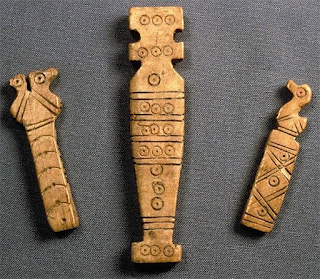
























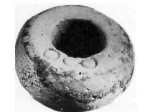

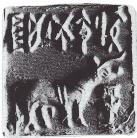
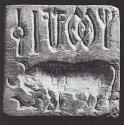
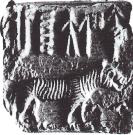

 Field symbol: पोळ [ pōḷa ] m A bull dedicated to the gods, marked with a trident and discus, and set at large. पोळी [ pōḷī ] dewlap. पोळा [ pōḷā ] 'zebu, bos indicus taurus' rebus: पोळा [ pōḷā ] 'magnetite, ferrite ore: Fe3O4'
Field symbol: पोळ [ pōḷa ] m A bull dedicated to the gods, marked with a trident and discus, and set at large. पोळी [ pōḷī ] dewlap. पोळा [ pōḷā ] 'zebu, bos indicus taurus' rebus: पोळा [ pōḷā ] 'magnetite, ferrite ore: Fe3O4'  Fire Altar. Lothal
Fire Altar. Lothal



 Note the overflowing water flowing from the shoulders of the horned person with one foot on the mountain-range:
Note the overflowing water flowing from the shoulders of the horned person with one foot on the mountain-range: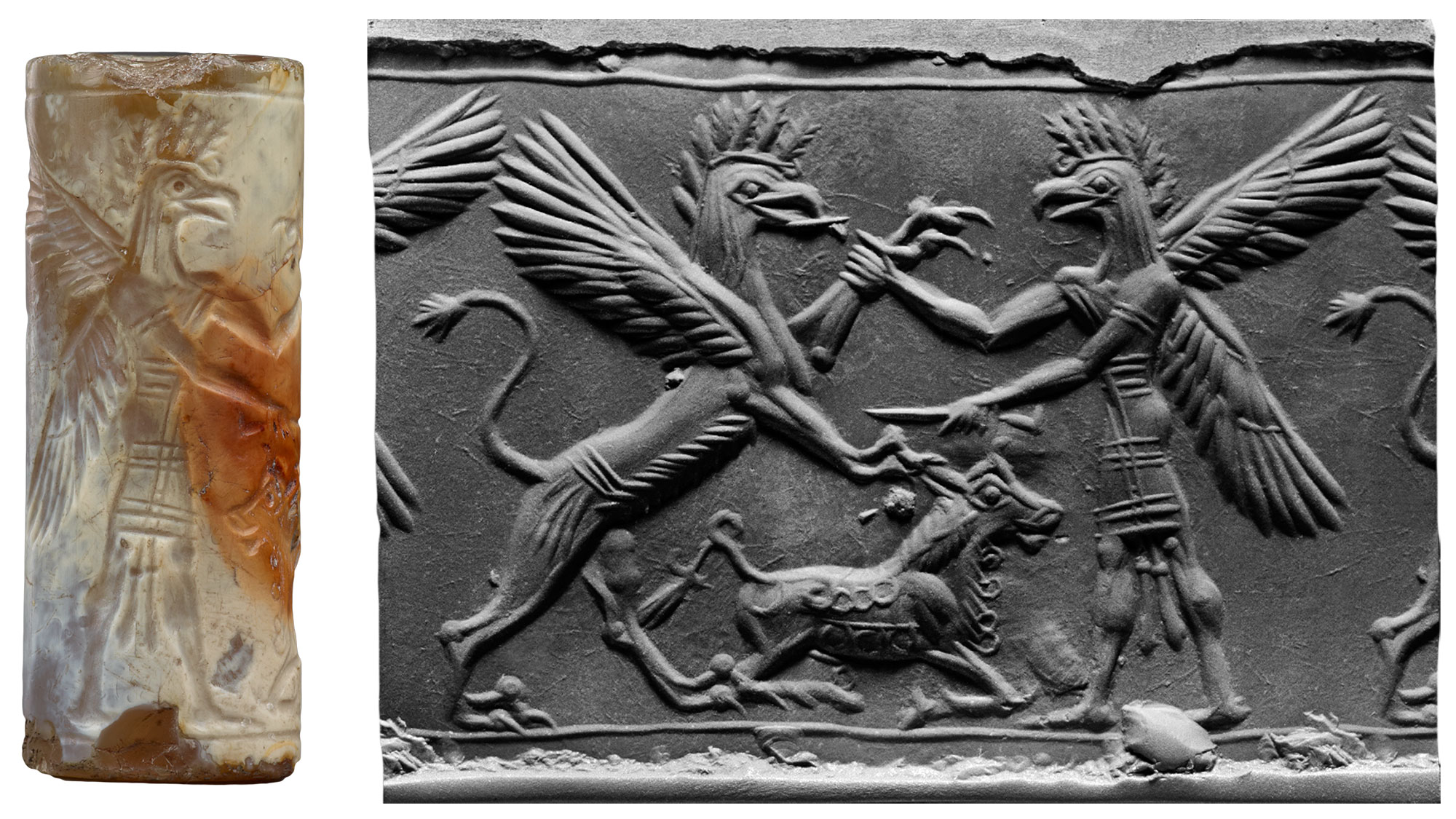 milky chalcedony. Griffin fights a griffin anthropomorph -- over a bull calf. The fight is over control of mineral ores: dhāū, dhāv m.f. ʻ a partic. soft red stone ʼ
milky chalcedony. Griffin fights a griffin anthropomorph -- over a bull calf. The fight is over control of mineral ores: dhāū, dhāv m.f. ʻ a partic. soft red stone ʼ 
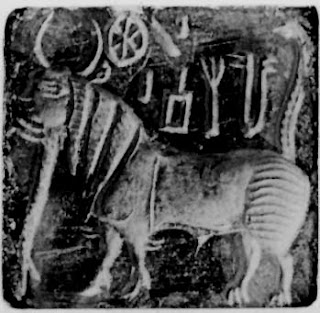








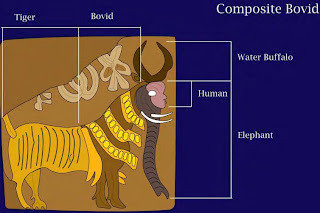
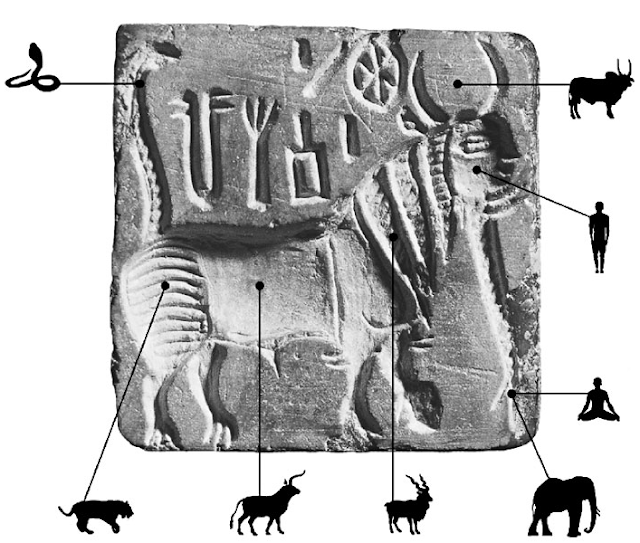



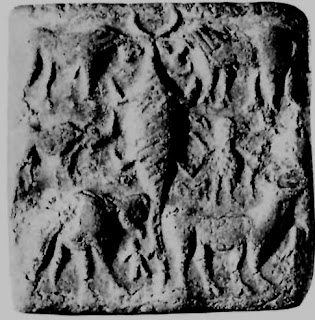
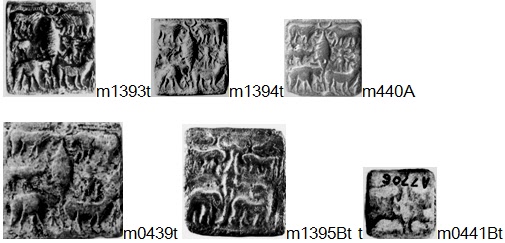
 m0295 Pict-61: Composite motif of three tigers (Mahadevan concodance)Location: Mohenjo Daro, Larkana Dt., Sind, Pakistan Site: Mohenjo Daro Monument/Object: carved sealCurrent Location: National Museum, New Delhi, India Subject: interlinked tigers Period: Harappa/Indus Civilization (Pakistan) (3300-1700 BCE) Date: ca. 2100 - 1750 BCE Material: stone Scan Number: 27412 Copyright: Huntington, John C. and Susan L. Image Source: Huntington Archive
m0295 Pict-61: Composite motif of three tigers (Mahadevan concodance)Location: Mohenjo Daro, Larkana Dt., Sind, Pakistan Site: Mohenjo Daro Monument/Object: carved sealCurrent Location: National Museum, New Delhi, India Subject: interlinked tigers Period: Harappa/Indus Civilization (Pakistan) (3300-1700 BCE) Date: ca. 2100 - 1750 BCE Material: stone Scan Number: 27412 Copyright: Huntington, John C. and Susan L. Image Source: Huntington Archive 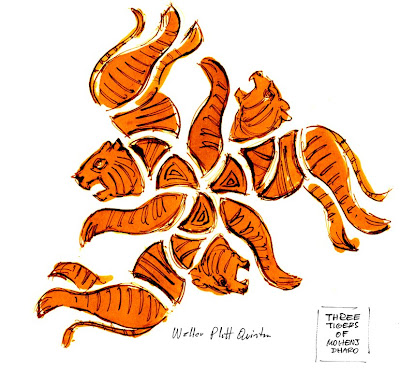


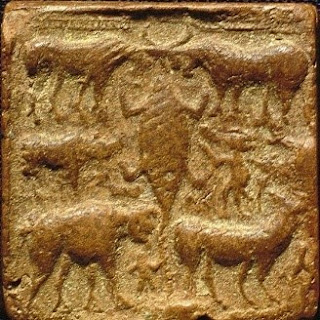
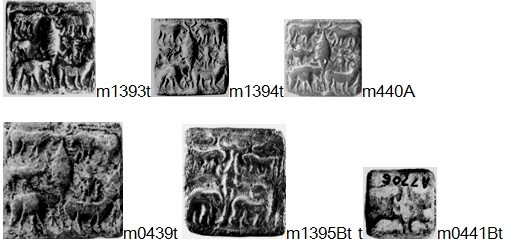

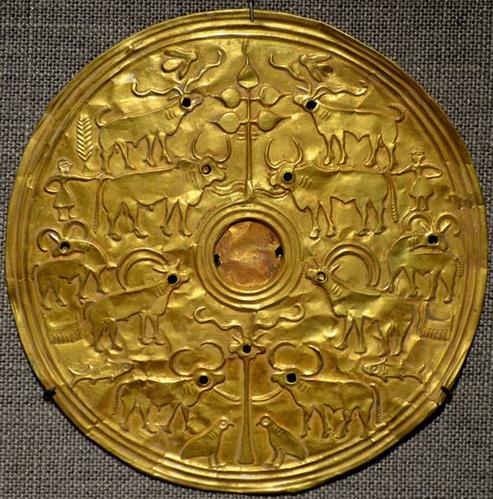



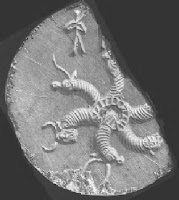 FS 62 Composite mo tif consist ing of six heads of animals viz.thnse of unicorn . short-horned bull. antelope. tiger and of two ulher uncertain animals radiating oulwarth. from a ring. (Frequency: 62 M Corpus)
FS 62 Composite mo tif consist ing of six heads of animals viz.thnse of unicorn . short-horned bull. antelope. tiger and of two ulher uncertain animals radiating oulwarth. from a ring. (Frequency: 62 M Corpus) 
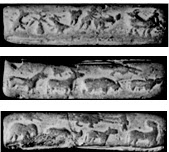


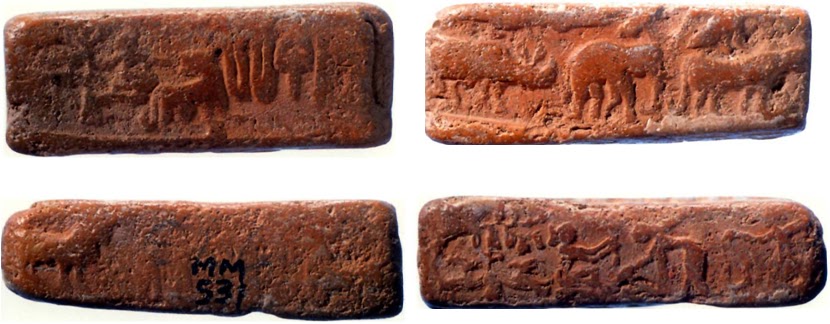


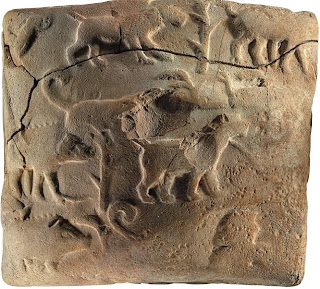


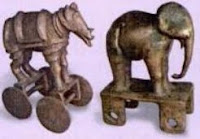
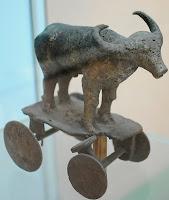
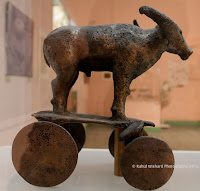



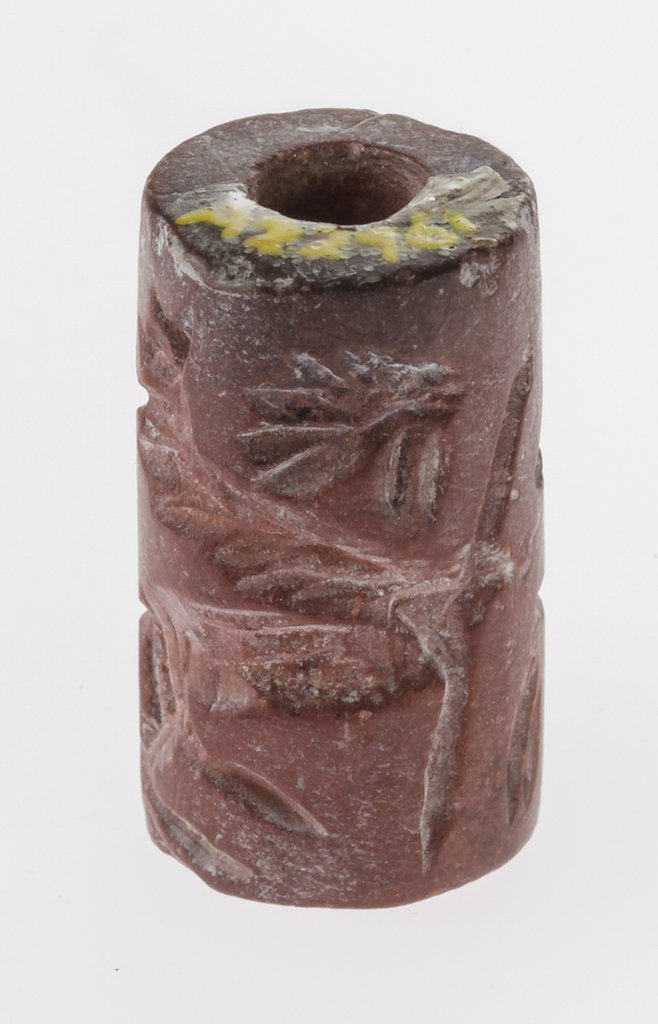
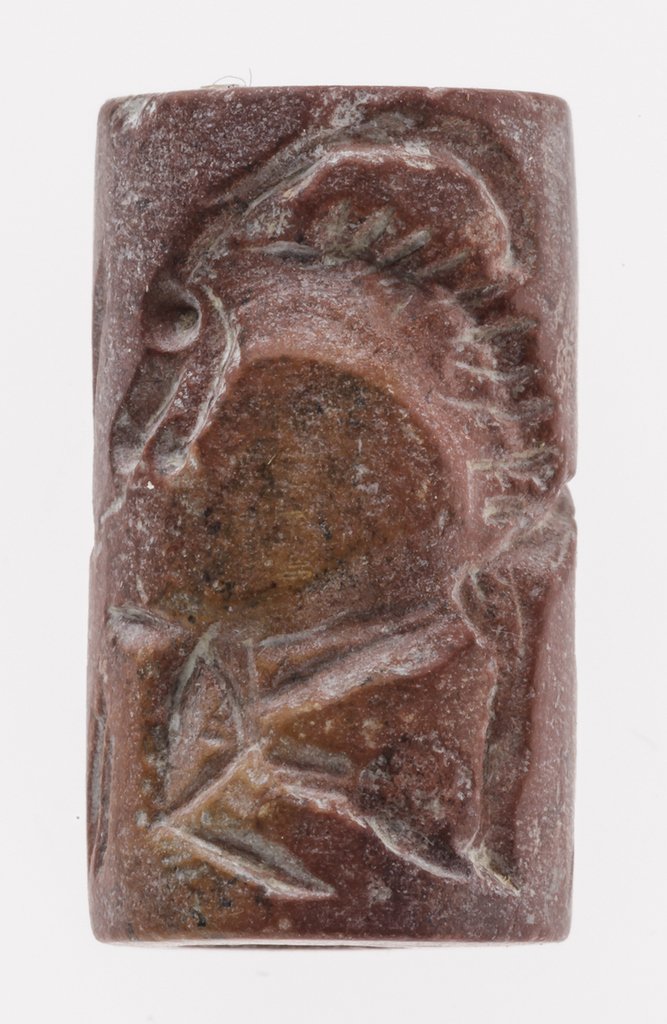
 Oriental Institute
Oriental Institute 
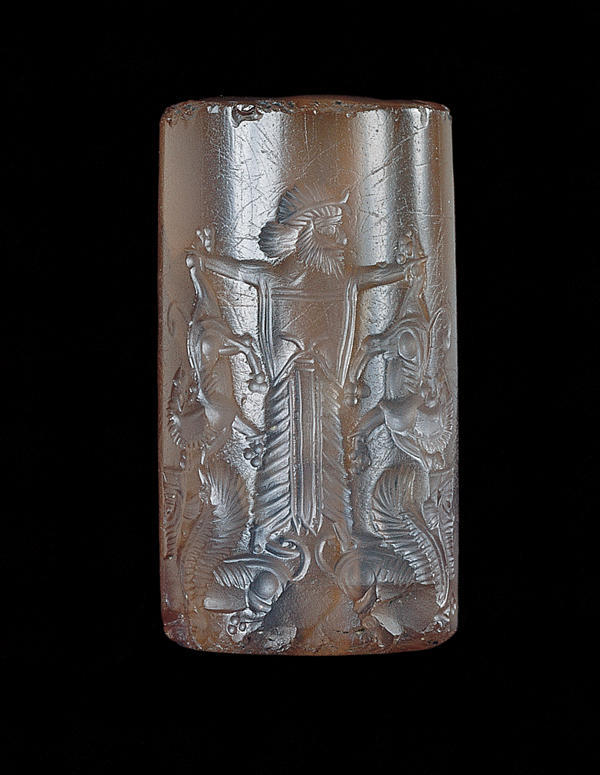
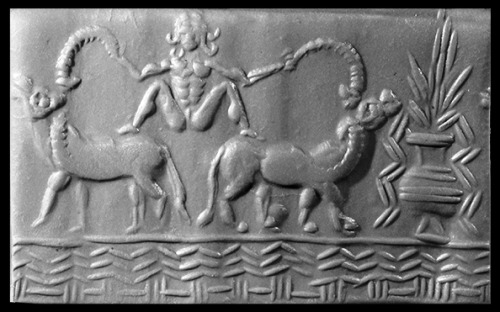



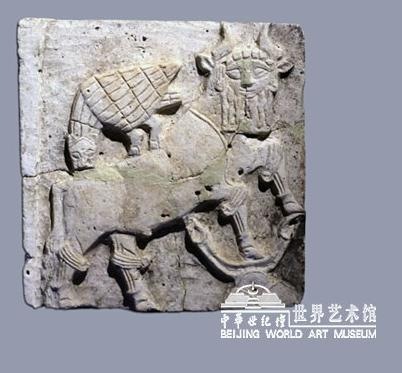





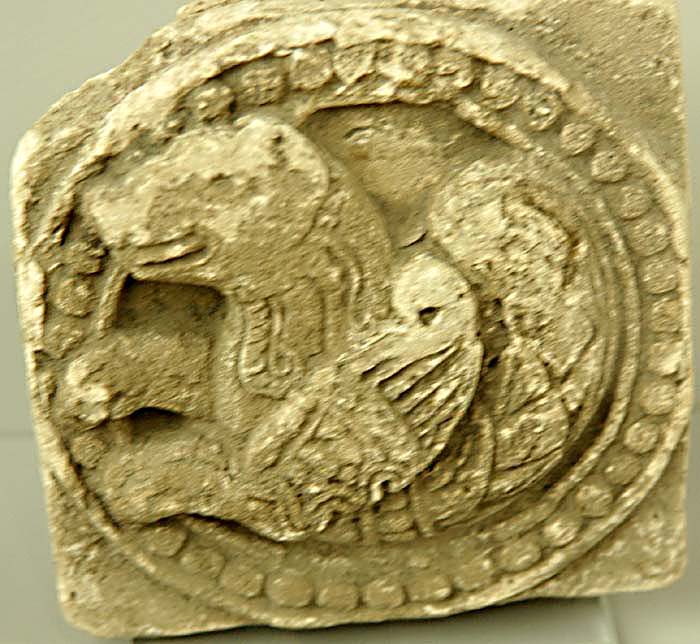
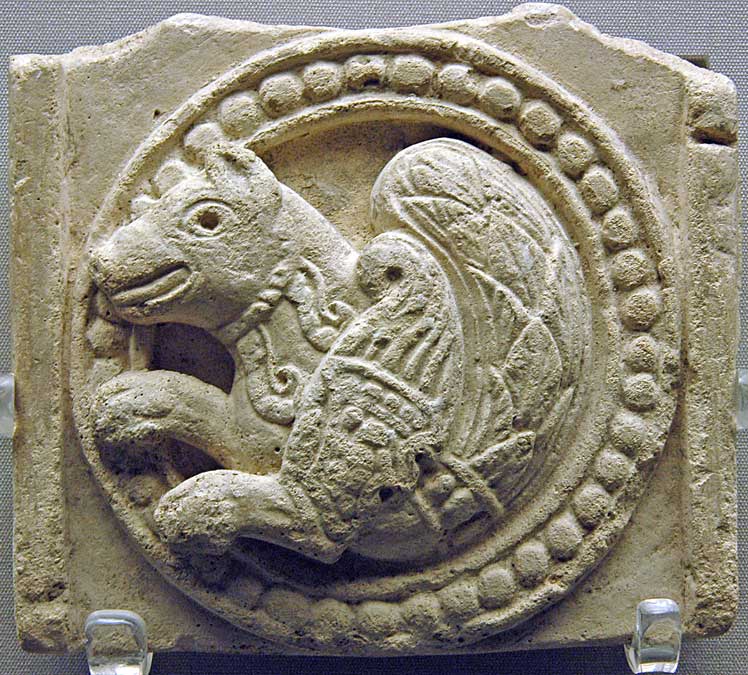

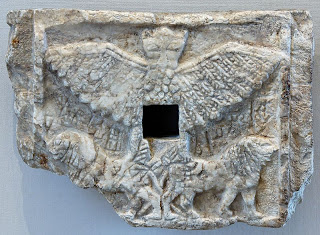
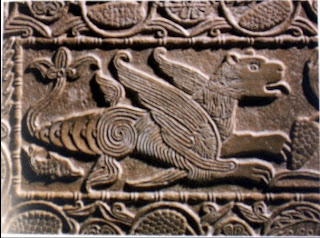
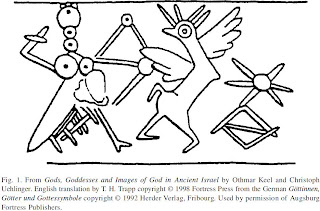 Seventh century BCE cylinder seal found in Israel depicting the battle of Ninurta and Anzu. Nili Wazana, in a brilliant exposition on Anzu and Ziz asks and tentatively answers the question: "Were the Israelites acquainted with the Epic of Anzu?" She cites this rendering of a seventh century BCE cylinder seal portraying the battle of Ninurta and Anzu, discovered in Israel.
Seventh century BCE cylinder seal found in Israel depicting the battle of Ninurta and Anzu. Nili Wazana, in a brilliant exposition on Anzu and Ziz asks and tentatively answers the question: "Were the Israelites acquainted with the Epic of Anzu?" She cites this rendering of a seventh century BCE cylinder seal portraying the battle of Ninurta and Anzu, discovered in Israel.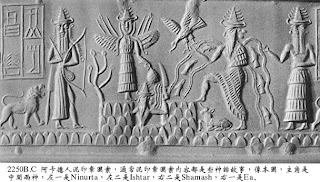




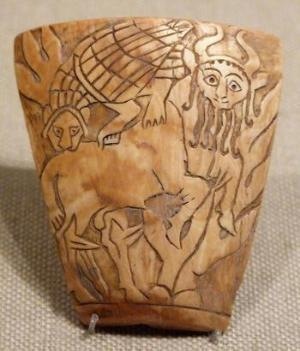 Carved horn cup showing Anzud, the lion-headed eagle, attacking a bull/man
Carved horn cup showing Anzud, the lion-headed eagle, attacking a bull/man
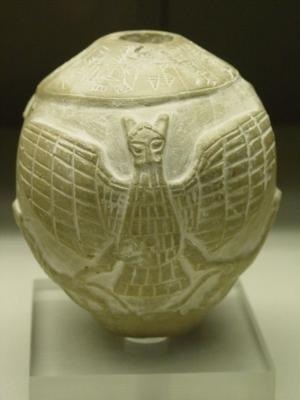




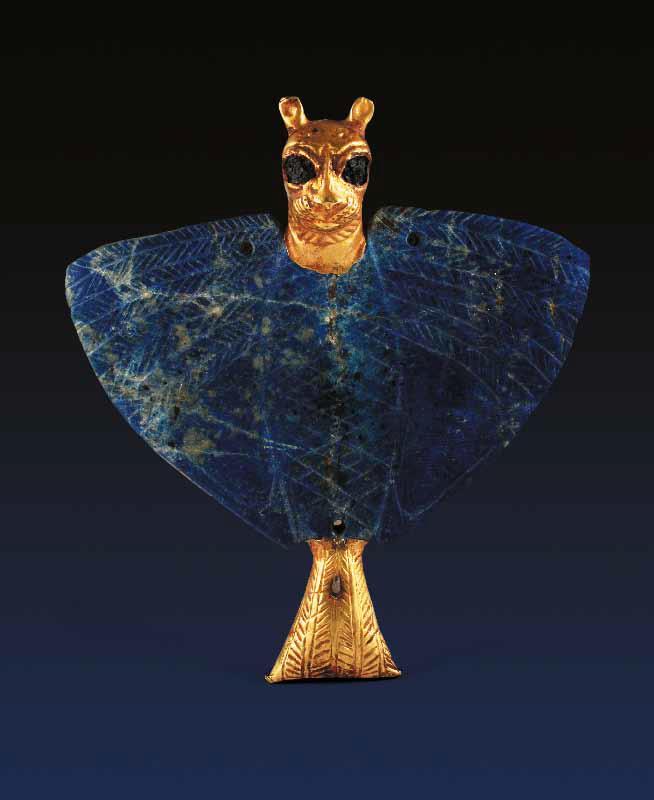


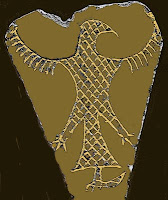


 m0451A
m0451A m0451B
m0451B Text 3235
Text 3235
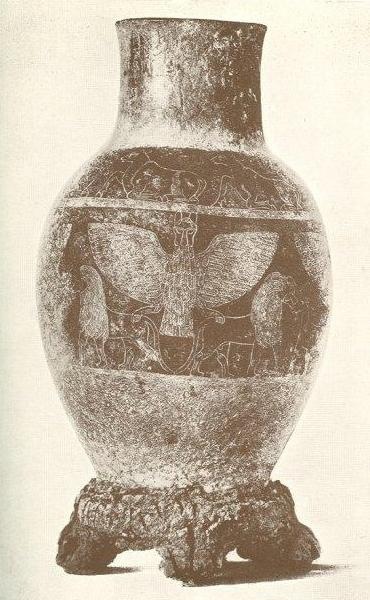











 Gonur Tepe Indus Script. karibha 'trunk of elephant' rebus: karba 'iron' ibha 'elephant' rebus: ib 'iron' Hieroglyph: ingot out of crucible: muh 'ingot' kuThAru 'crucible' rebus:kuThAru 'armourer' kolmo 'rice plant' rebus:kolimi 'smithy, forge'. Thus ingot for forge. sal 'splinter'rebus: sal 'workshop' aDaren 'lid' rebus: aduru 'native metal' aya, ayo 'fish' rebus: aya 'iron' ayas 'metal' Hieroglyph: kāmṭhiyɔ m. ʻ archer ʼ.rebus: kammaTa 'mint, coin, coiner' ranku 'liquid measure' rebus: ranku 'tin' kolmo 'rice plant' rebus: kolimi 'smithy, forge' karNaka, kanka 'rim of jar' rebus: karNI 'Supercargo' karnaka 'engraver, scribe'.
Gonur Tepe Indus Script. karibha 'trunk of elephant' rebus: karba 'iron' ibha 'elephant' rebus: ib 'iron' Hieroglyph: ingot out of crucible: muh 'ingot' kuThAru 'crucible' rebus:kuThAru 'armourer' kolmo 'rice plant' rebus:kolimi 'smithy, forge'. Thus ingot for forge. sal 'splinter'rebus: sal 'workshop' aDaren 'lid' rebus: aduru 'native metal' aya, ayo 'fish' rebus: aya 'iron' ayas 'metal' Hieroglyph: kāmṭhiyɔ m. ʻ archer ʼ.rebus: kammaTa 'mint, coin, coiner' ranku 'liquid measure' rebus: ranku 'tin' kolmo 'rice plant' rebus: kolimi 'smithy, forge' karNaka, kanka 'rim of jar' rebus: karNI 'Supercargo' karnaka 'engraver, scribe'.




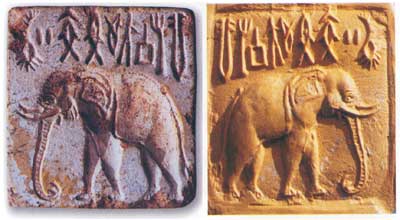










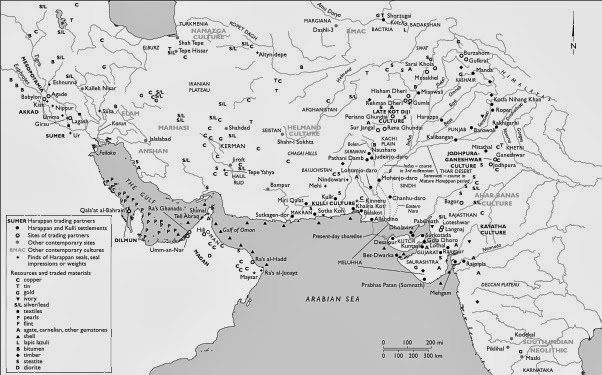

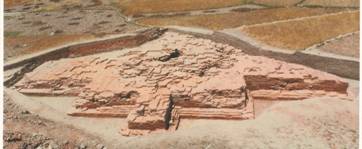 24x18 m. vedika discovered in Purola, ca. 2nd cent. BC to 1st cent. CE. Laid out in the east-west direction. "
24x18 m. vedika discovered in Purola, ca. 2nd cent. BC to 1st cent. CE. Laid out in the east-west direction. "



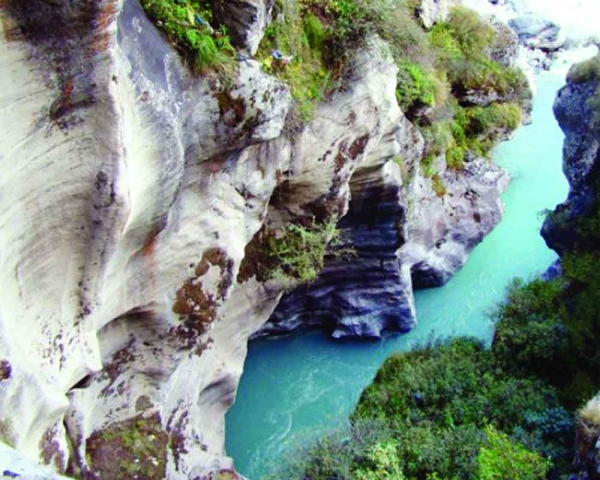
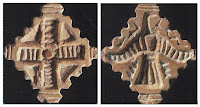 Bogazkhoy seal impression;
Bogazkhoy seal impression; 

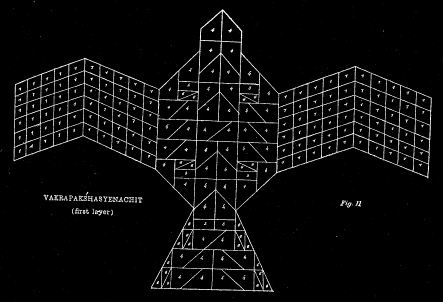
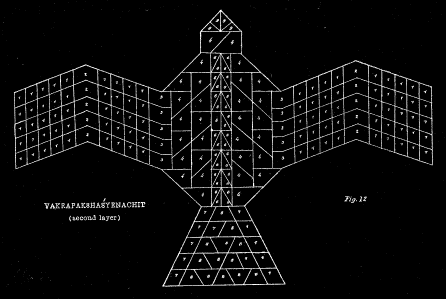
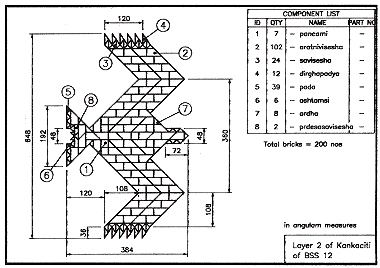
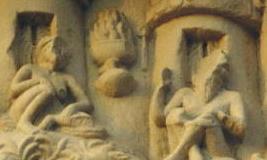

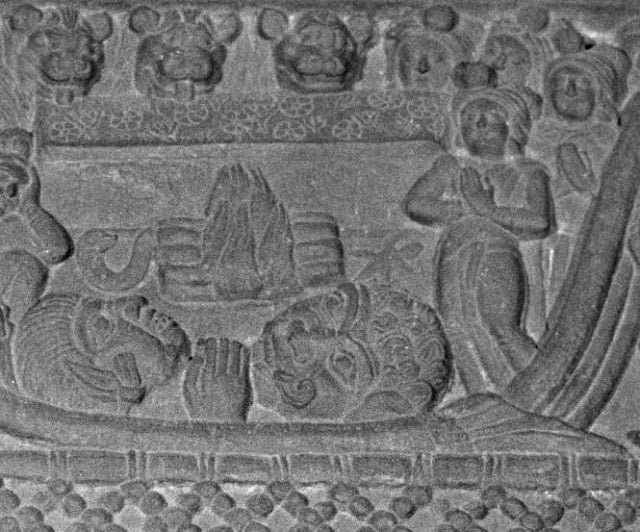



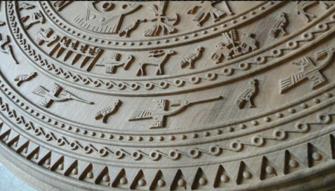


















































![clip_image033[4]](http://kalyan97.files.wordpress.com/2007/06/clip-image0334-thumb.jpg?w=71&h=44)








